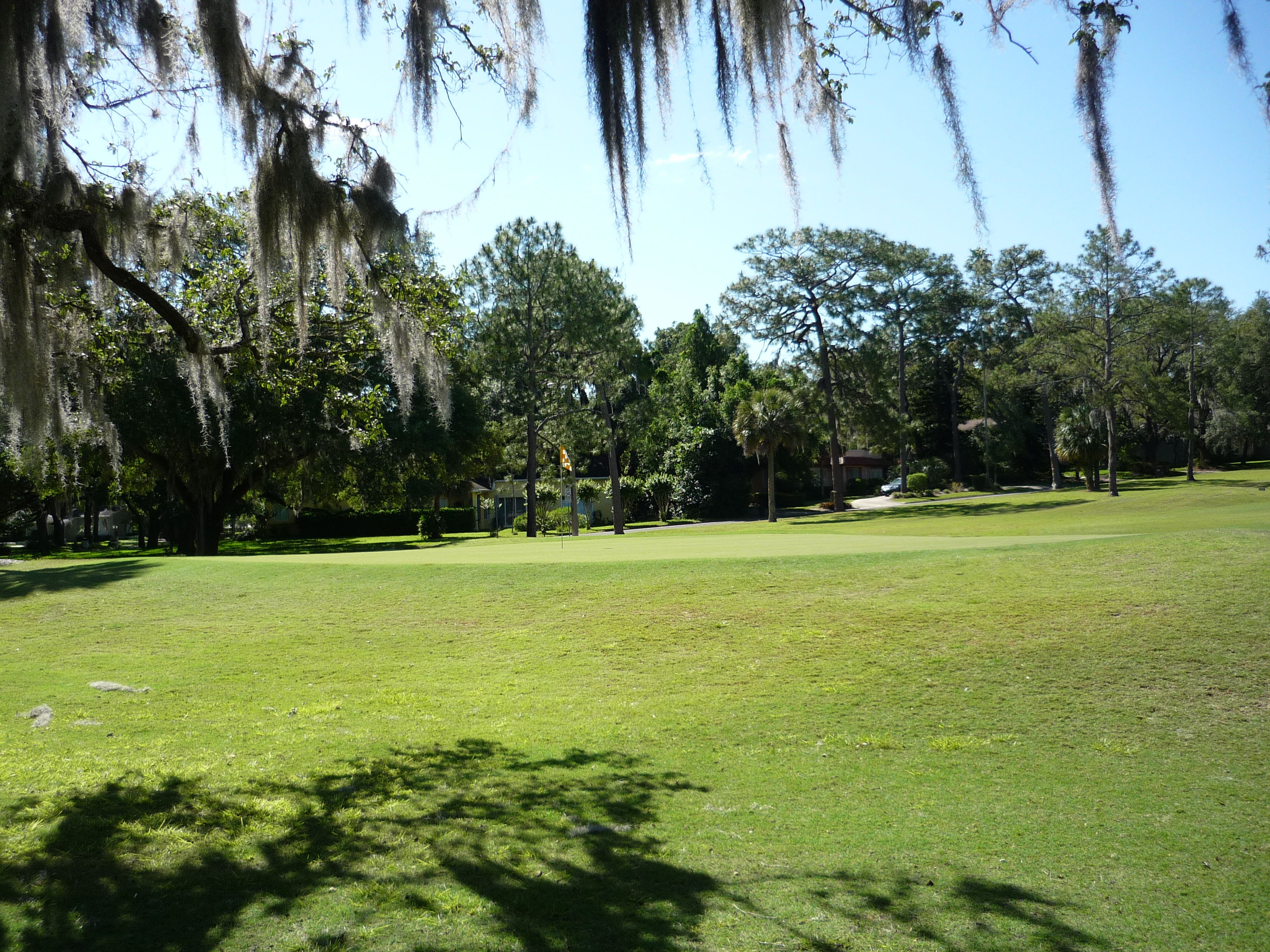
Temple Terrace Country Club – Played April 2019
- Rankings: None of my four lists
- Location: 200 Inverness Avenue, Temple Terrace, Florida
- Year: 1922
- Architect: Tom Bendelow
- Course Access: Semi-Private
- Walking Rules: Carts Available
Score Card Information:
- Blue: 6,345 yards, Par 72, 70.2 Rating/127 Slope
- White: 6,082 yards, Par 72, 69.0 Rating/124 Slope
- Green: 5,547 yards, Par 72, 66.1 Rating/117 Slope (Men’s), 72.0 Rating/120 Slope (Women’s)
- Red: 5,434 yards, Par 72, 71.3 Rating/117 Slope
For the final round in Florida, I left the rest of the crew back at the beach. I was meeting up with my old GolfMatch friend, Tim, who had moved down to Florida recently.
We weren’t sure where we going to play at first. After some Twitter advice solicitation, I settled on Temple Terrace Country Club. It is one of oldest private clubs in Central Florida but they allow outside play.
The course was designed by Tom Bendelow who was a very prolific architect in the early part of the 20th century. He built over 400 courses including Medinah Country Club in Chicago. Temple Terrace itself was opened in 1922 and is on the National Register of Historic Places. It’s the only 18-hole course in Florida with that designation.
The original design featured no parallel fairways and roads on each side of the holes to allow viewing from automobiles. The course was routed in a figure eight.
In the 1920’s the club had a casino that did big business. Al Jolson, one of the biggest names at the time, and other stars performed there. You’ll see the original clubhouse in the photo tour on the eighteenth. Not to be outdone by the casino, the golf club employed “Long” Jim Barnes as the first head professional. He won numerous events including two PGA Championships. He was a large figure in the games early history.
Another bit of history is purported to have occurred on the 18th green in 1939. Billy Graham was said to have decided on his career while meditating on the green one night while he was attending Florida Bible Institute (now Florida College). I didn’t do any fact checking on that but it’s a cool anecdote.
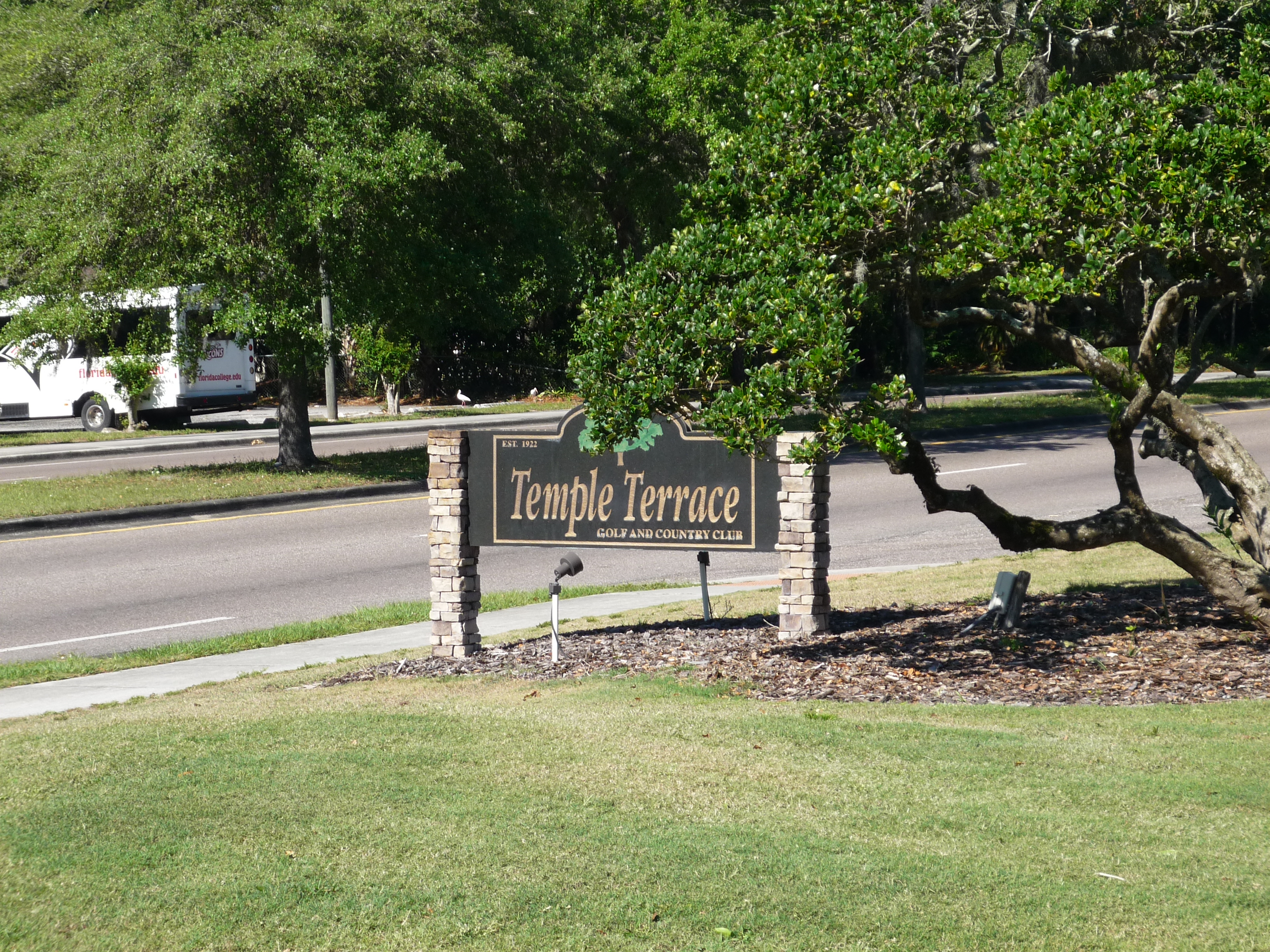
The “range” is not the most luxurious but it gets the job done. You will see in some of the photos and if you visit, the course is smack dab in the middle of a neighborhood. The space saving range is a good idea!
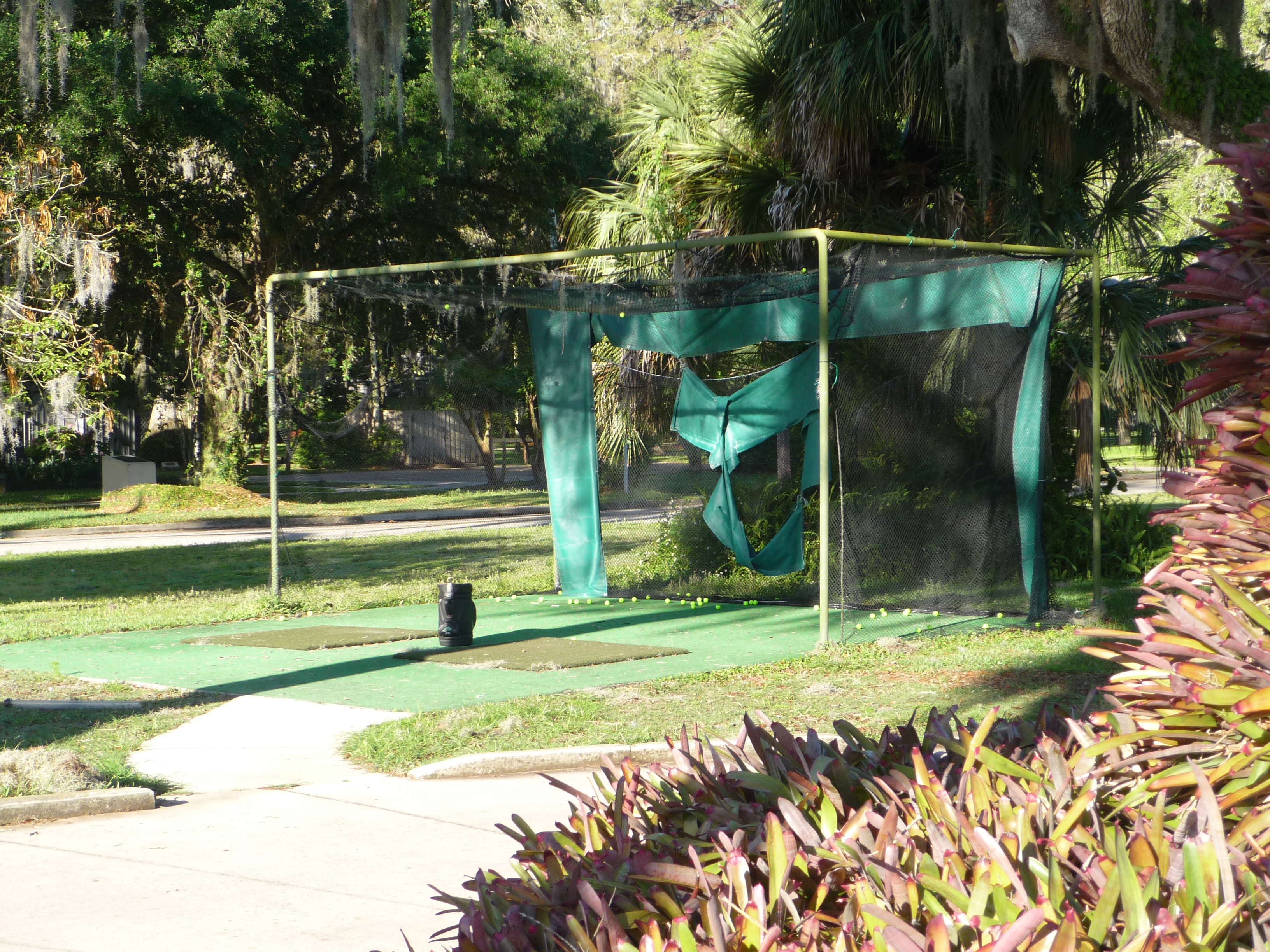
Hole 1 – 379 yards – Par 4
The first is not long but don’t be lulled into a false sense of security. Trees pinch in on the sides and will absolutely affect your approach. Once in the fairway, it’s go time with a flat green guarded by two front bunkers.
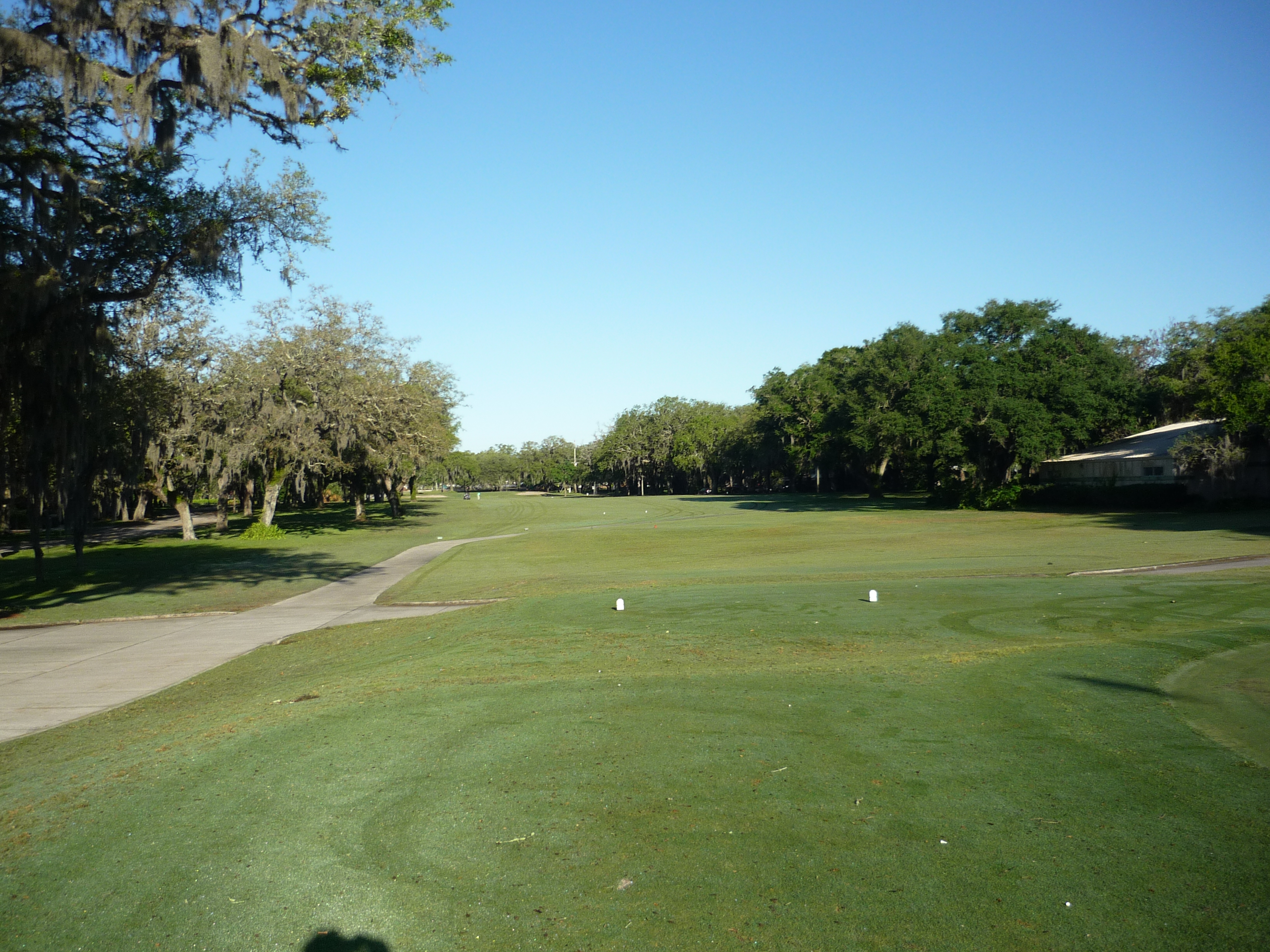
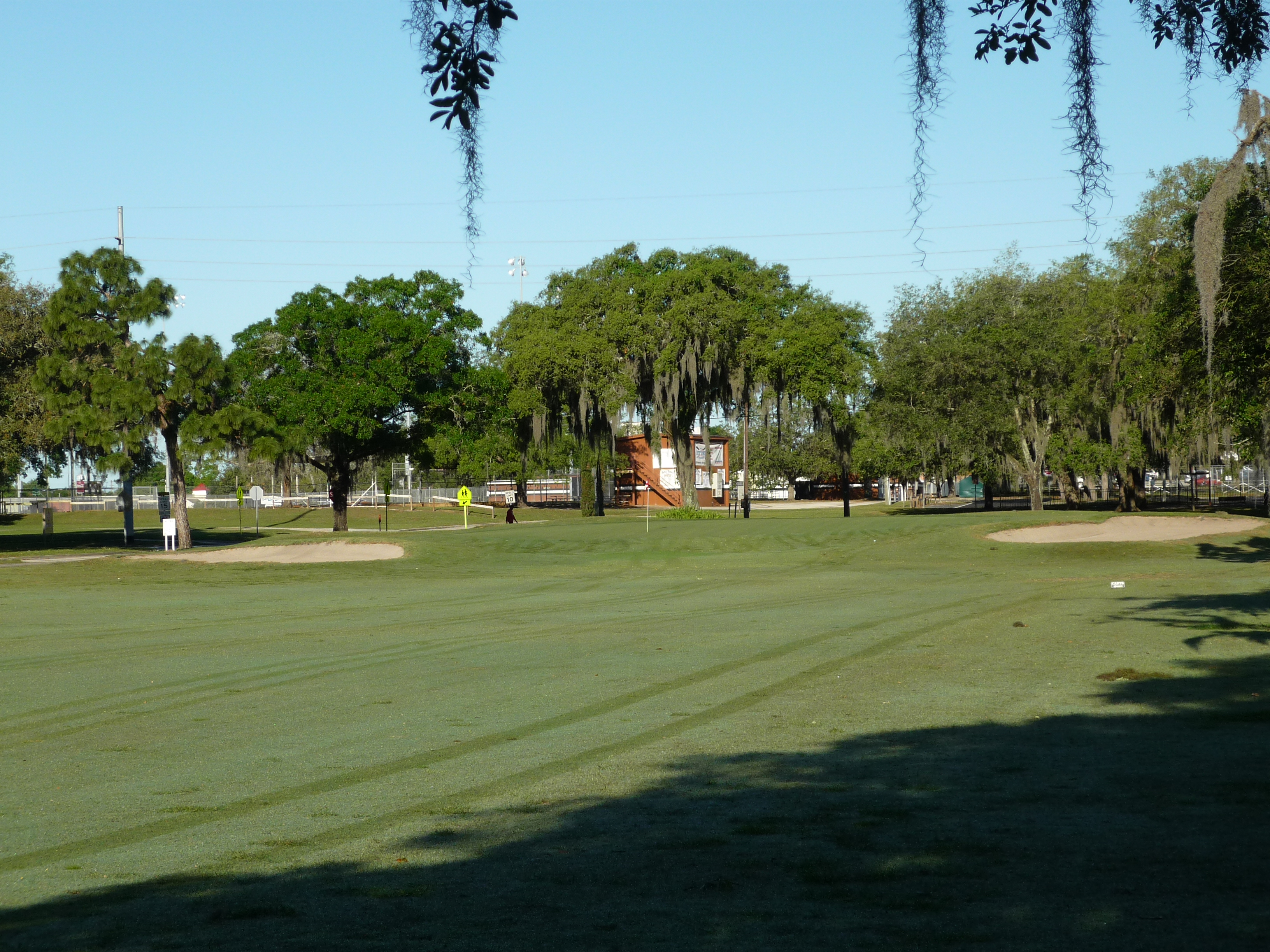
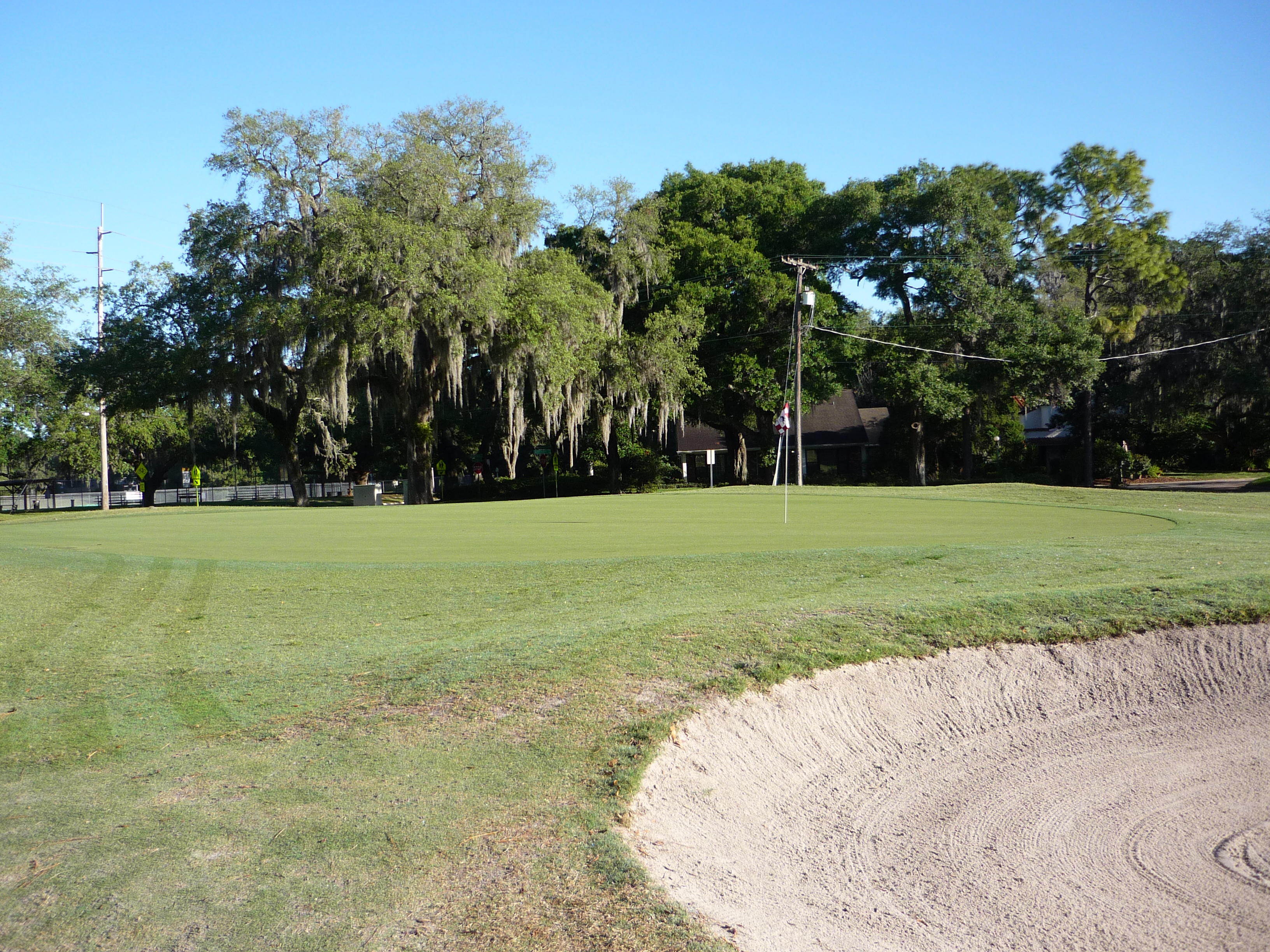
Hole 2 – 365 yards – Par 4
This hole bends slightly right but beware of cutting the corner. This old golf course comes with old-growth trees.
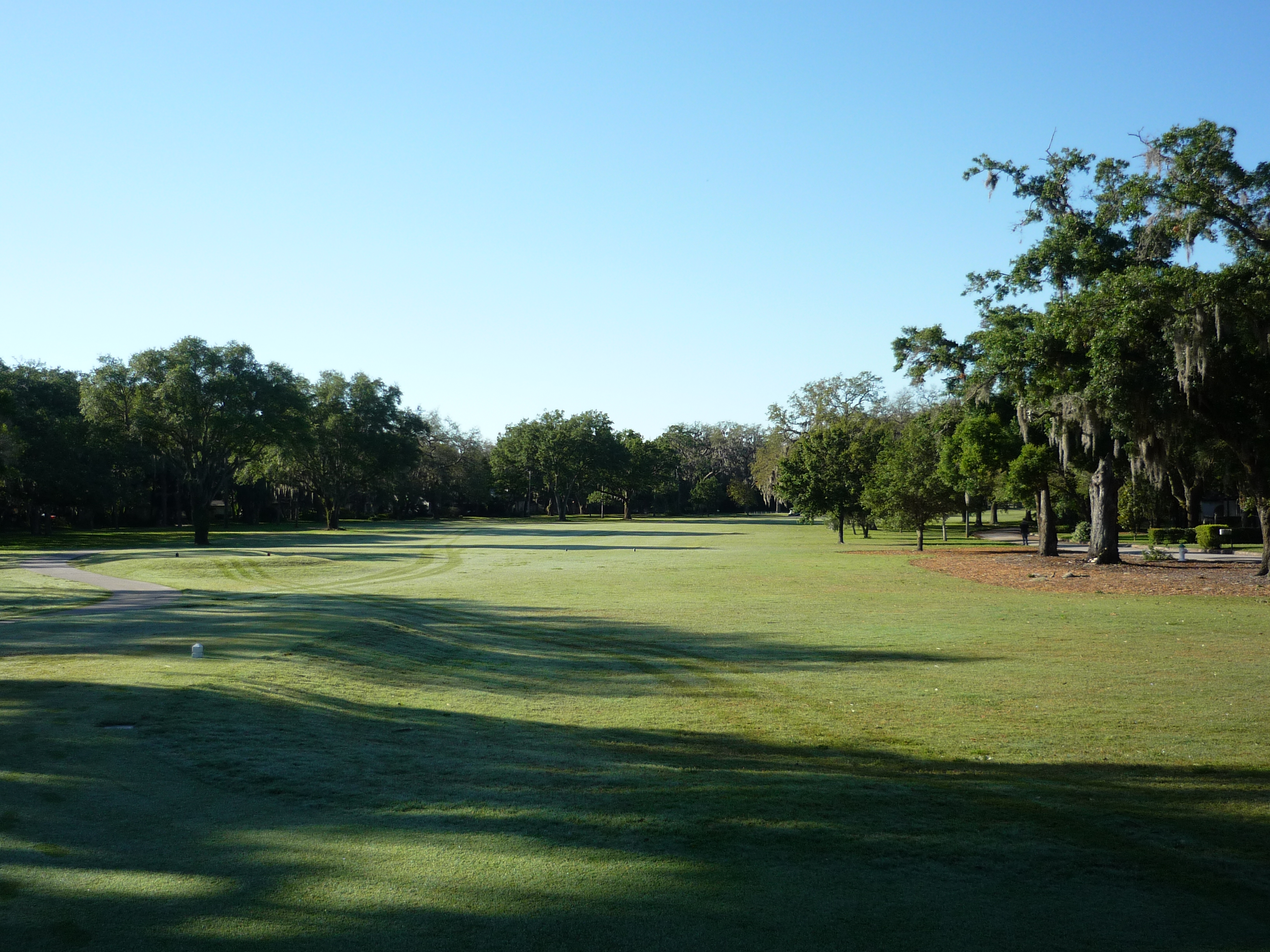
The green is elevated just a bit and features some raised bunkers to the right and back.
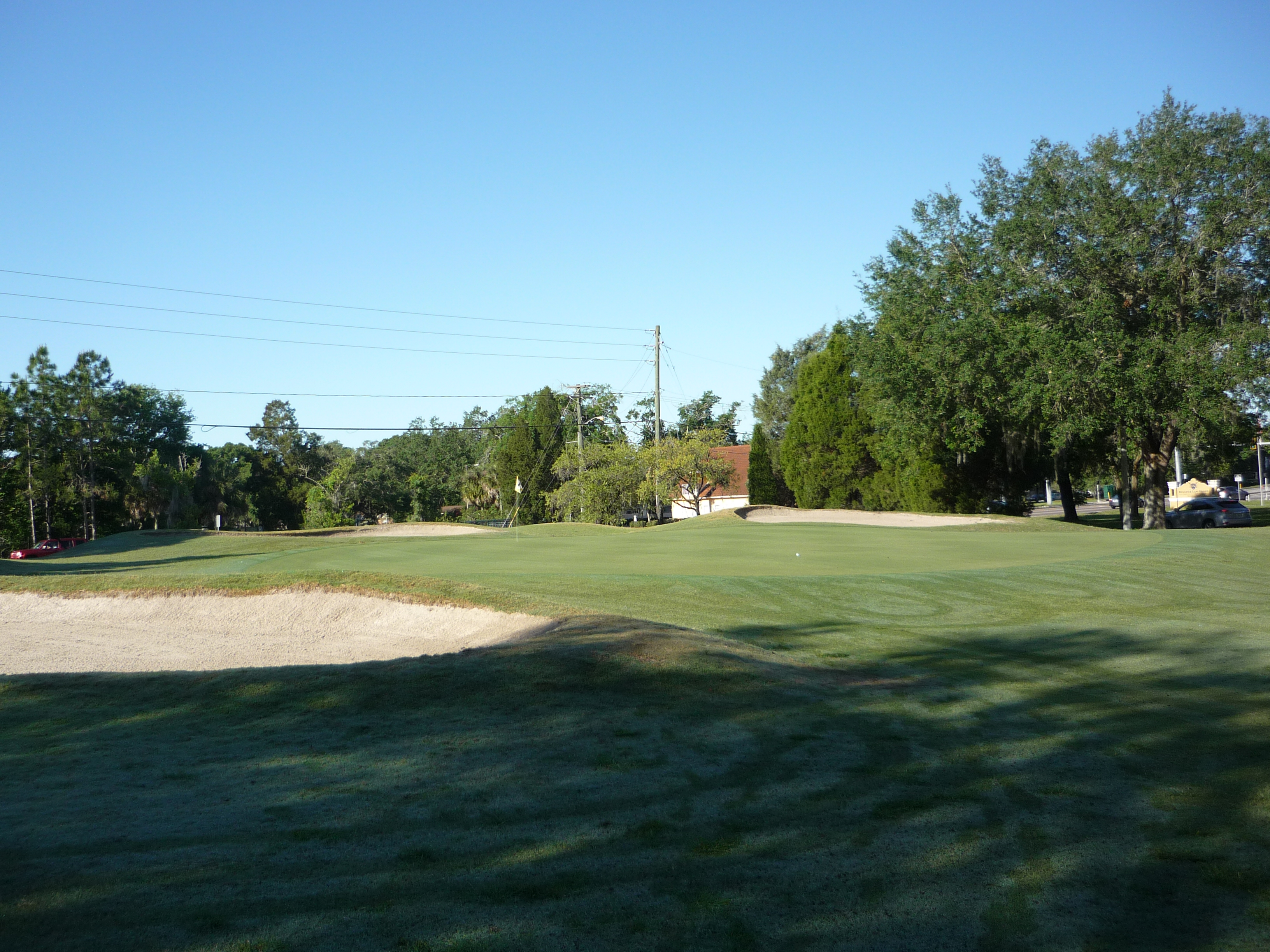
Hole 3 – 343 yards – Par 4
Driver can get dicey here with trees and bunkers present in the landing area. A smooth 200 yard shot sets you up to fire at the flag.
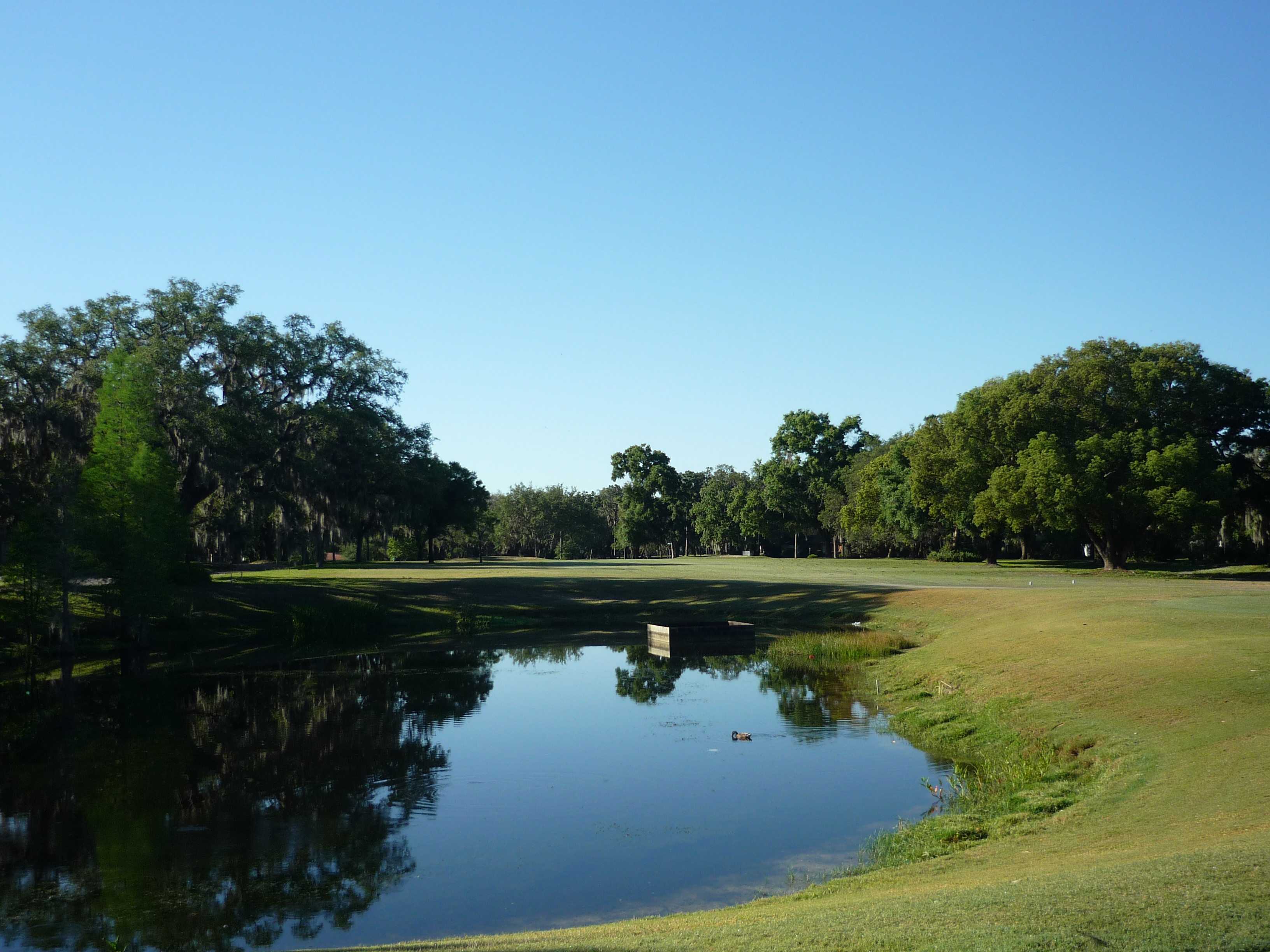
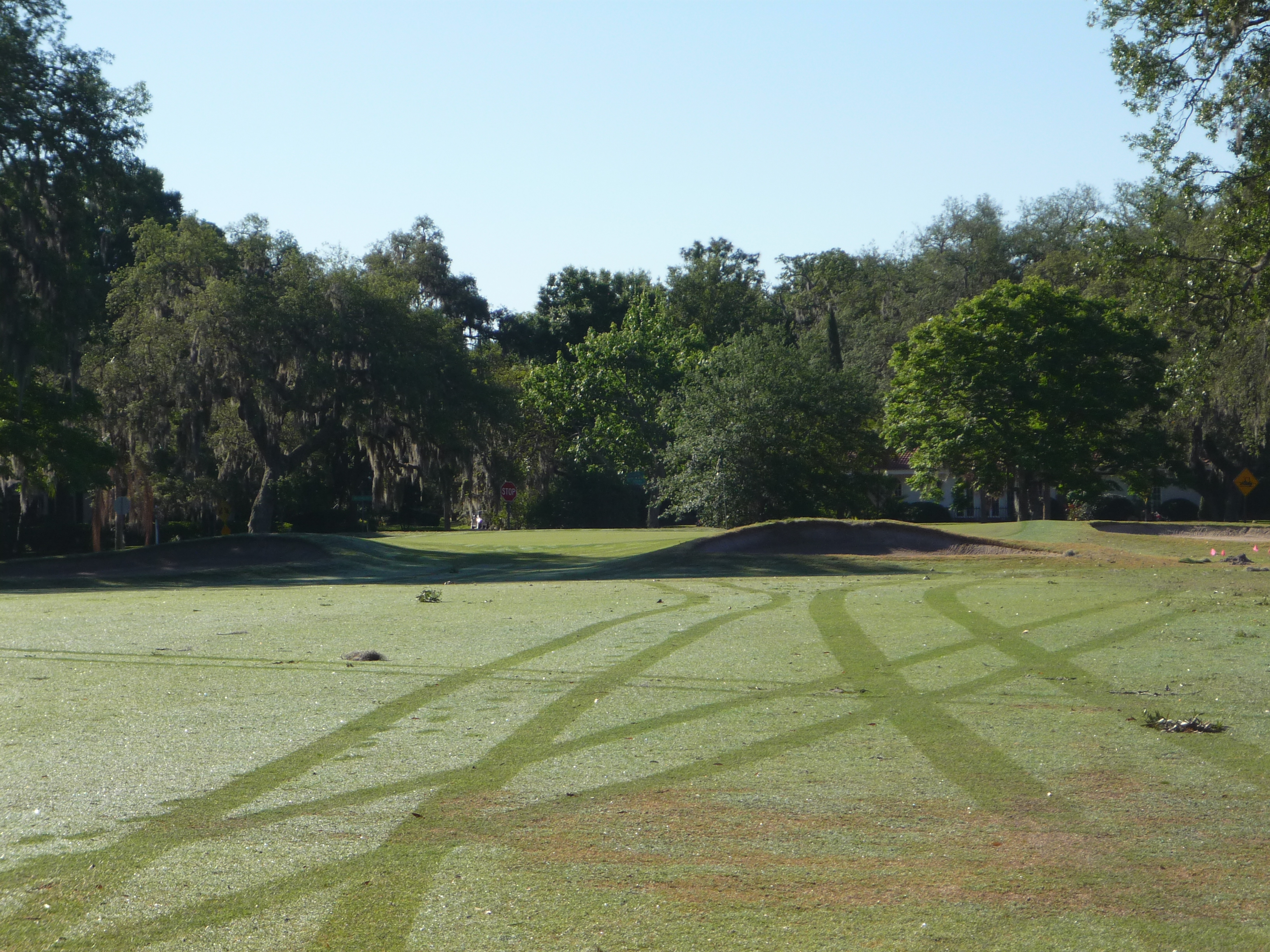
Hole 4 – 177 yards – Par 3
Nothing fancy here with this straightforward par three. Do avoid going long however.
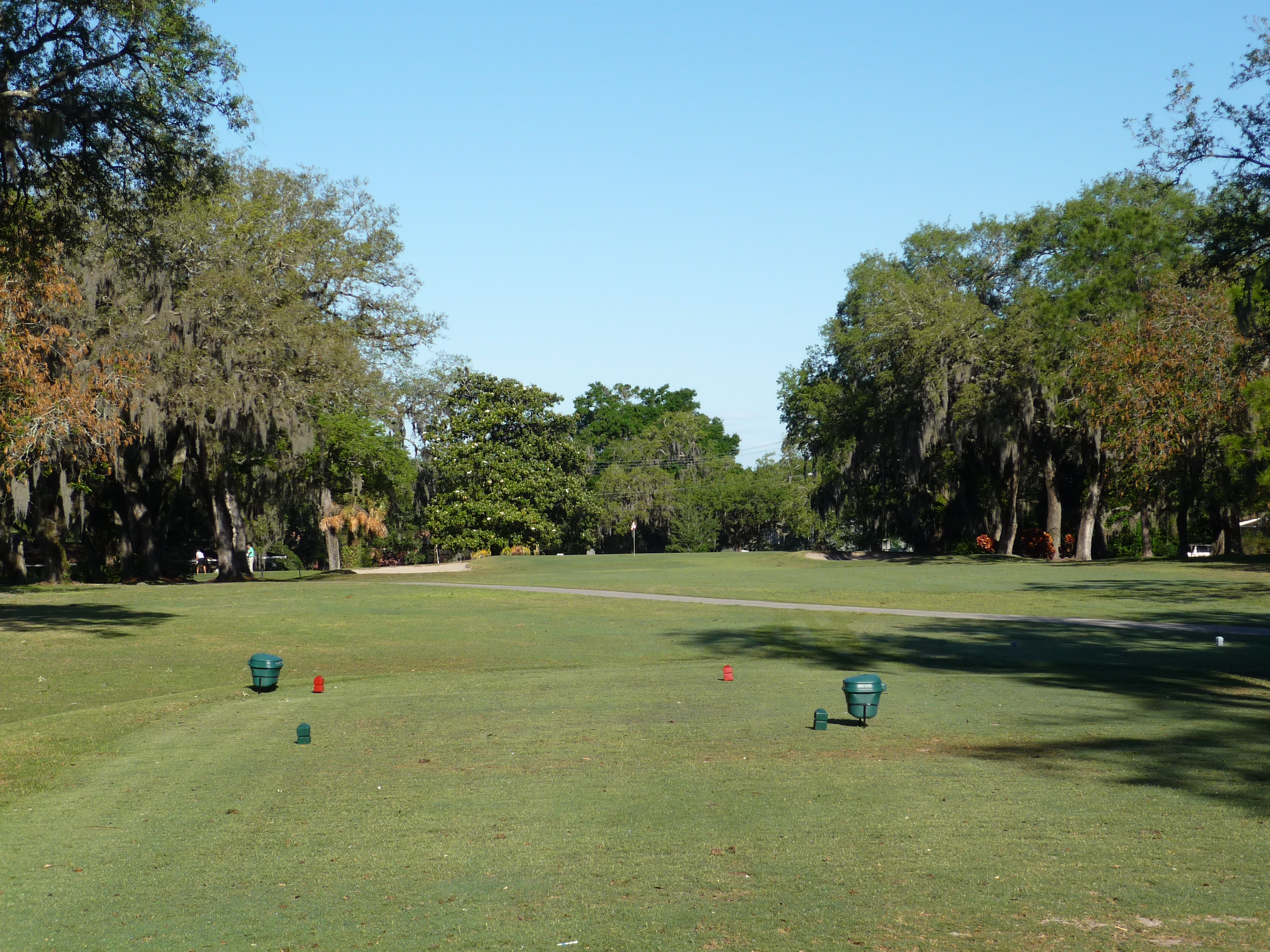
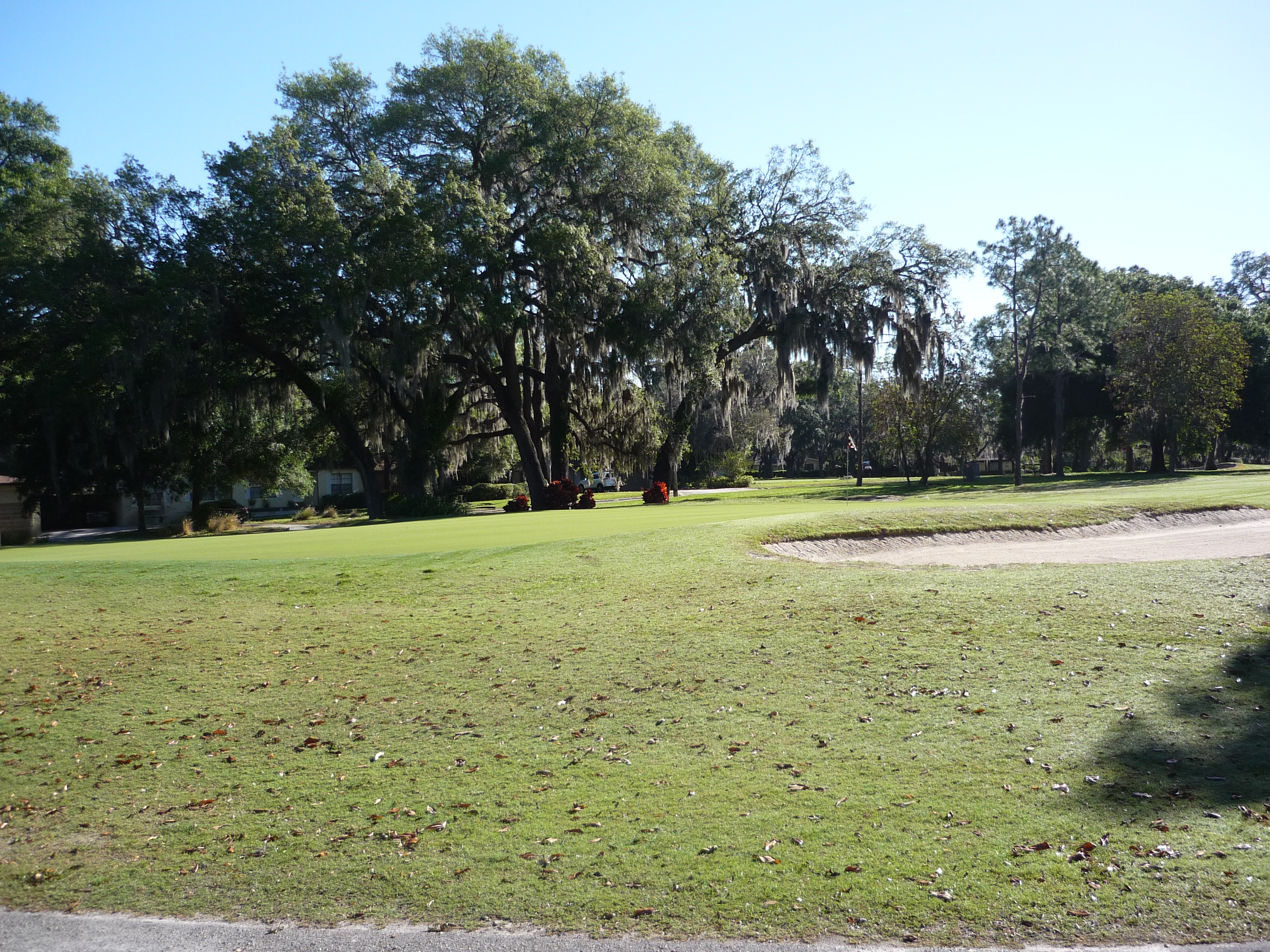
Hole 5 – 516 yards – Par 5
You need a straight drive from this tee as the trees are again present on each side. From the view in the second photo you can see I hit into them to give you the full experience!
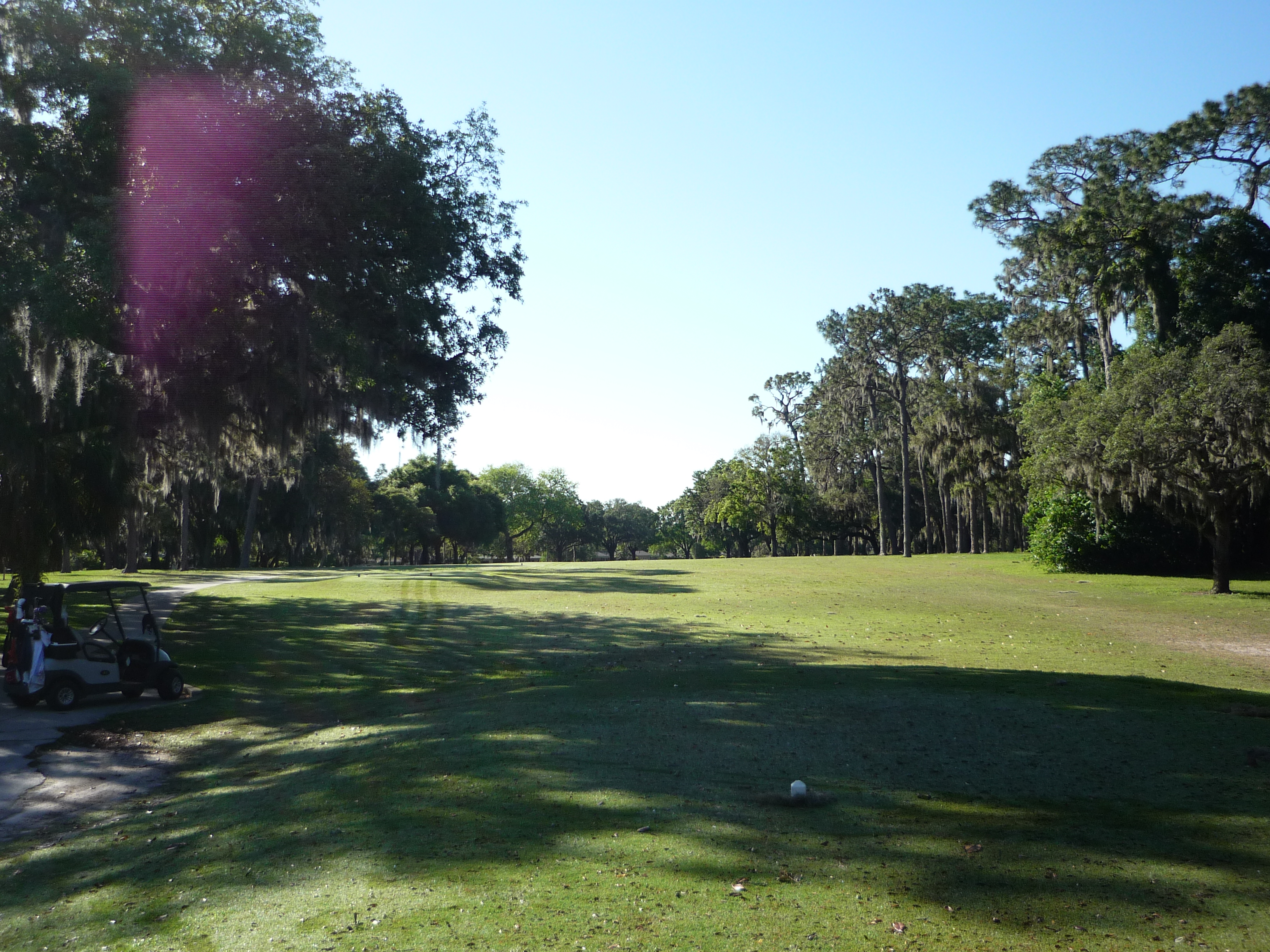
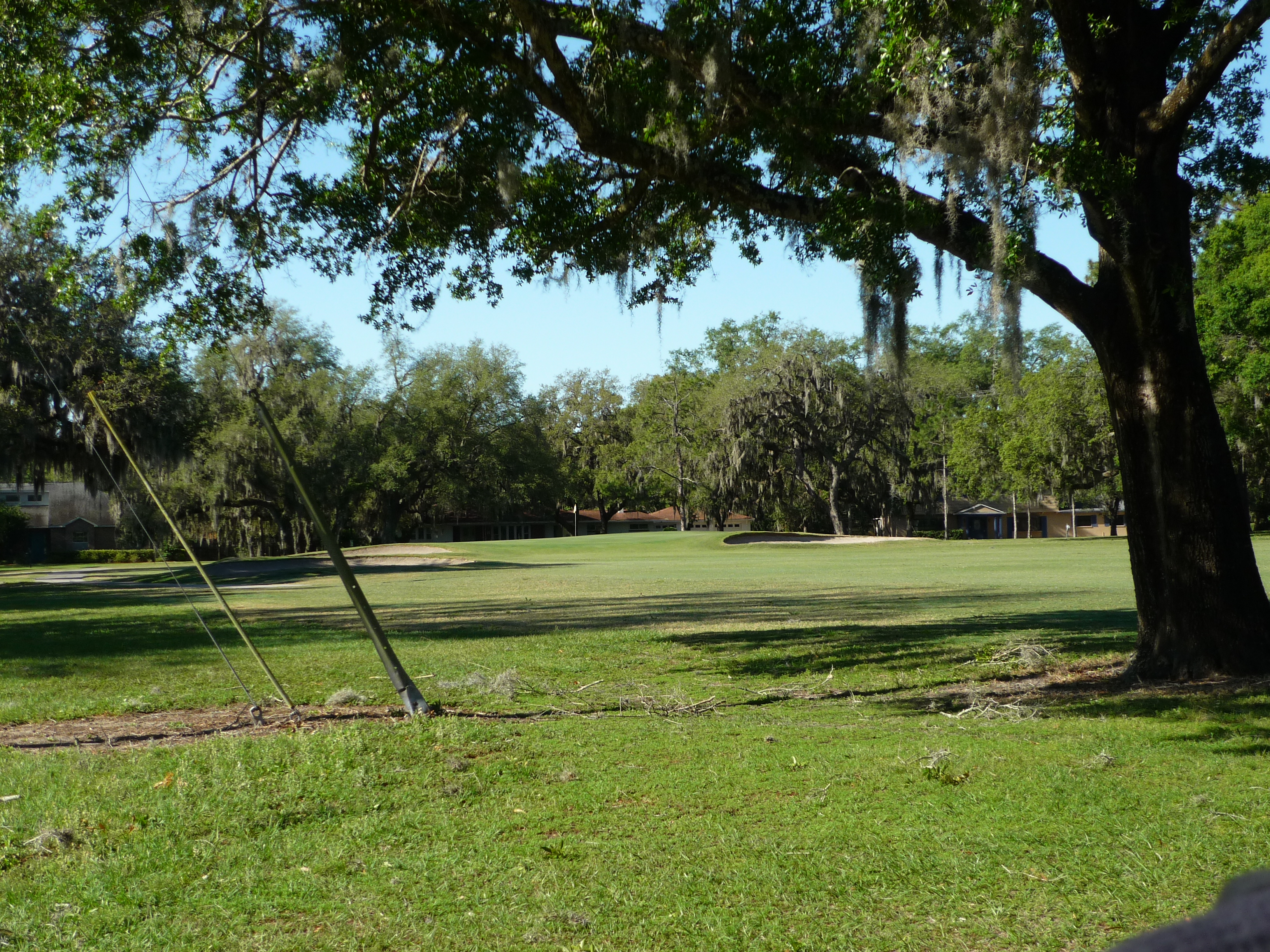
The green is easily attacked but like the last hole, going long is not recommended.
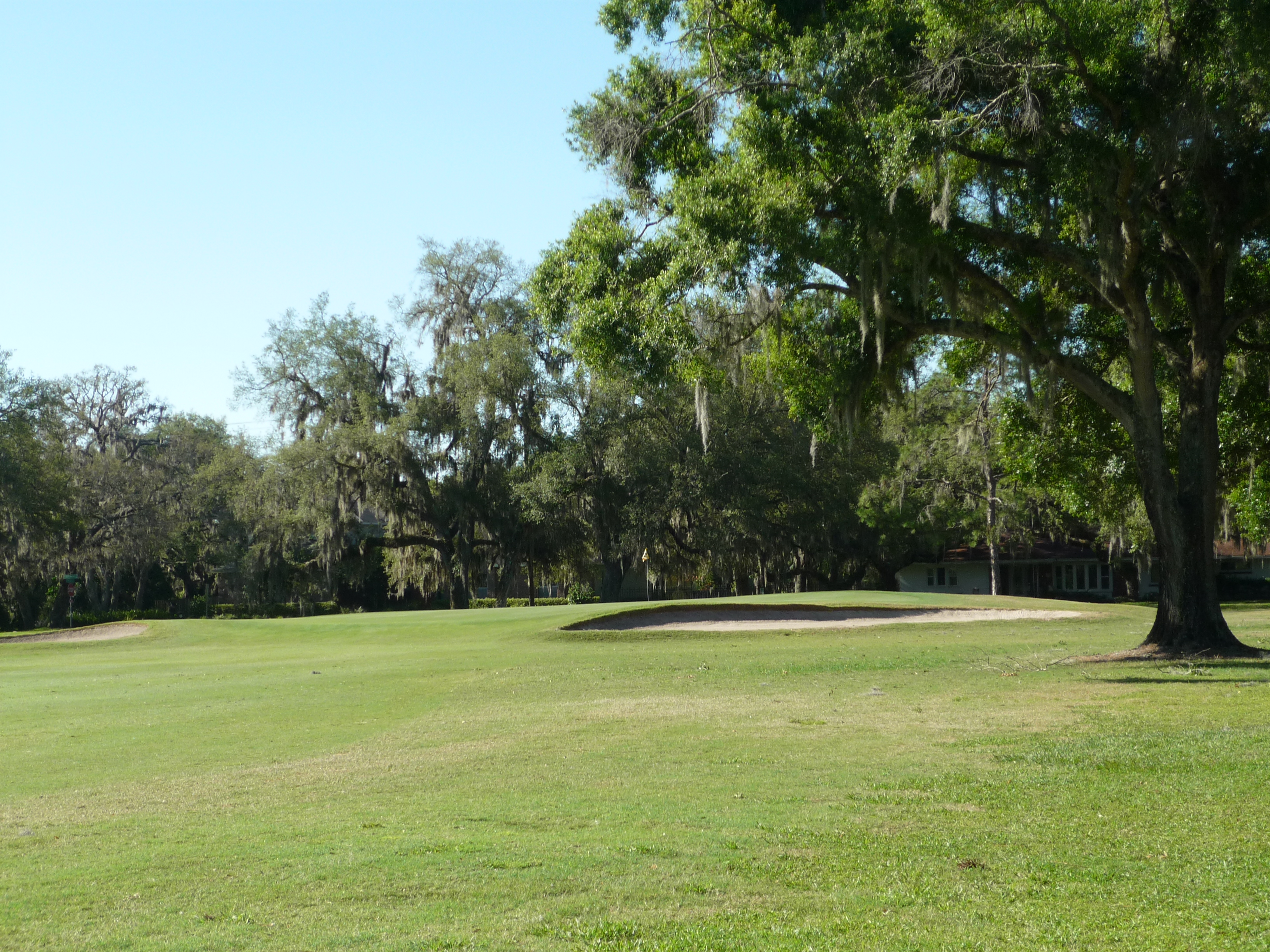
Hole 6 – 360 yards – Par 4
Just a mid-length, straight par four here. Drive, iron, and some putts (hopefully less than 3)!
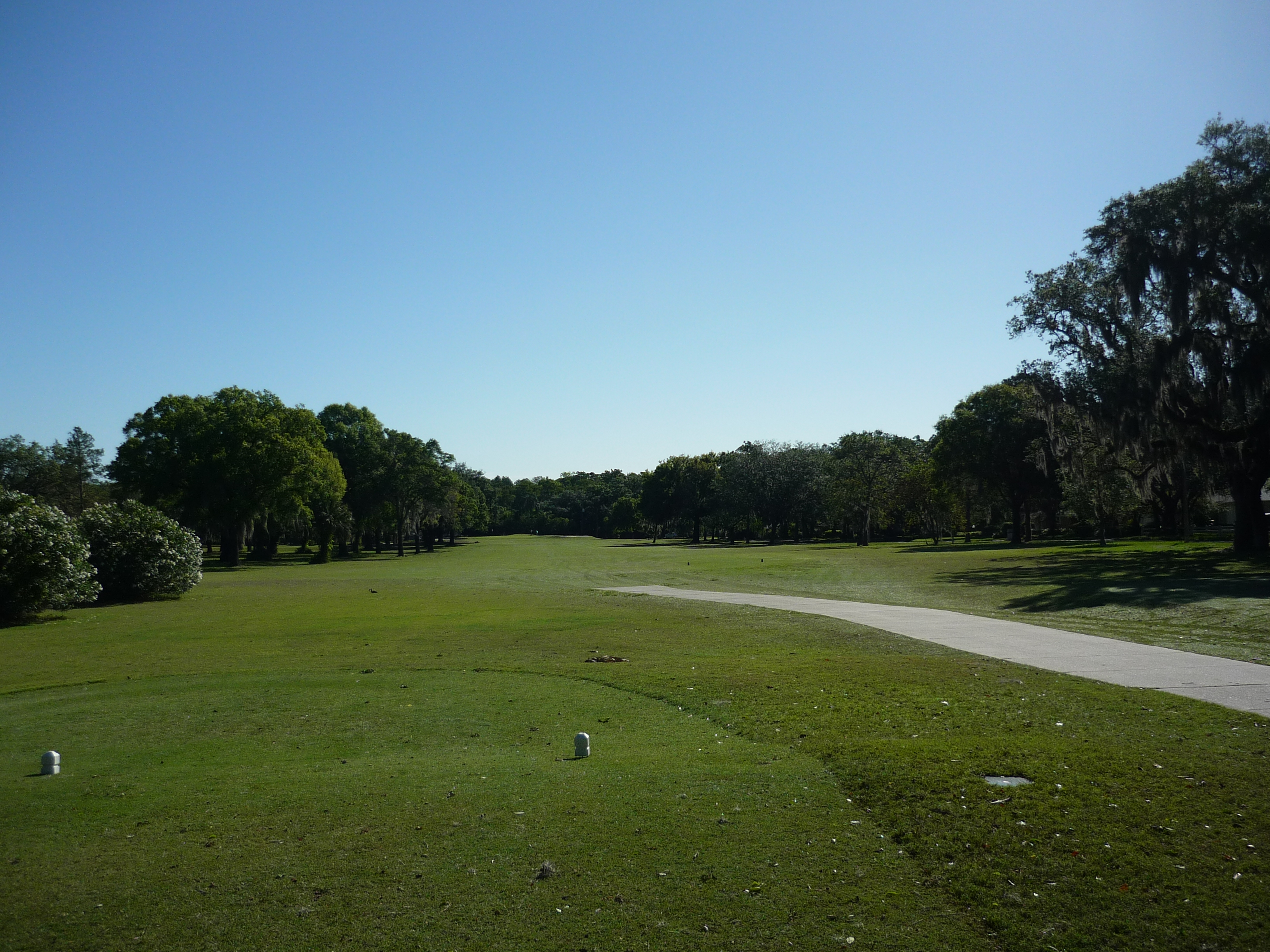
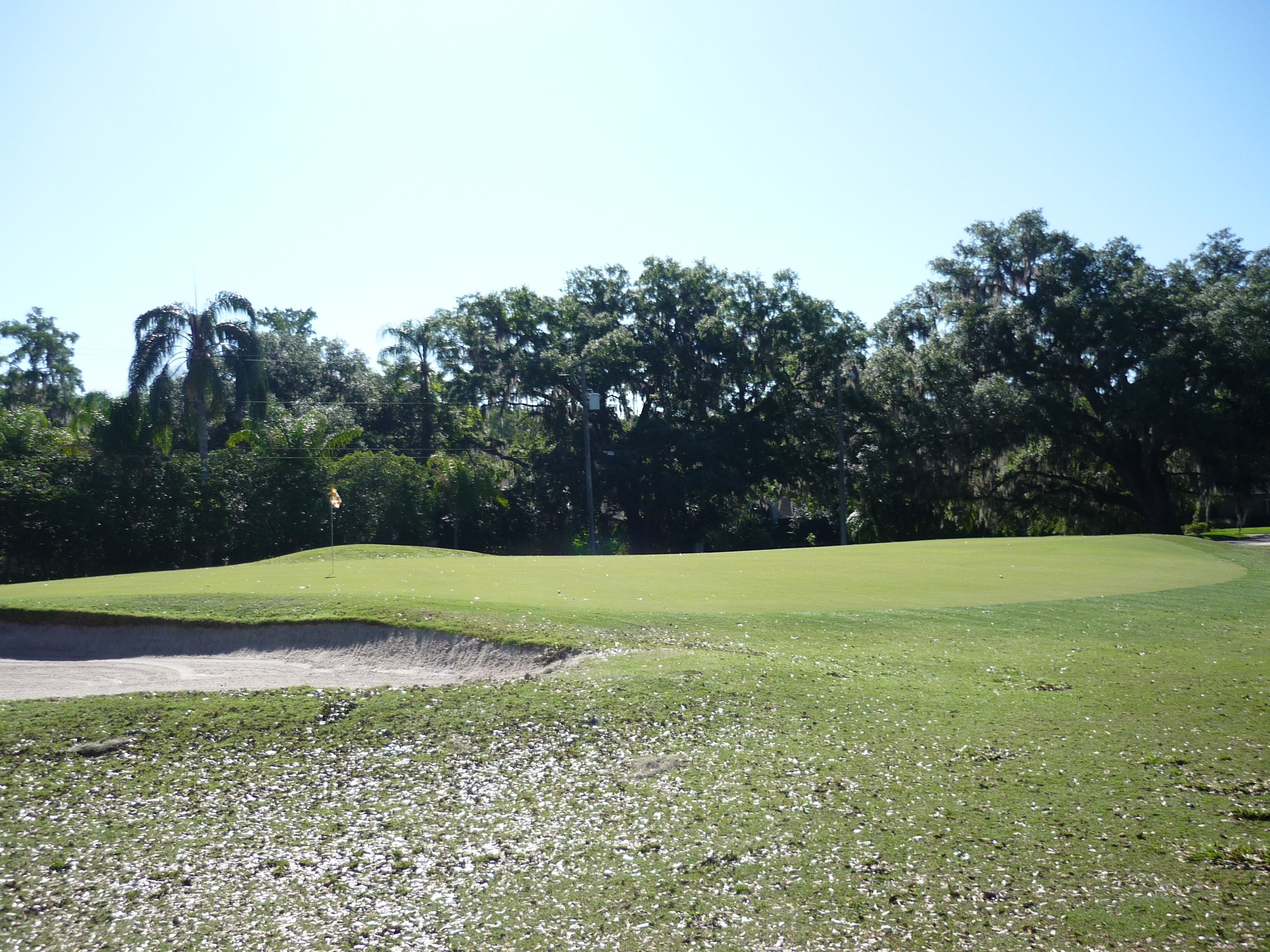
Hole 7 – 460 yards – Par 5
Get excited because birdie is definitely attainable on this hole. A bunker guards the right side in the landing area while a water hazard comes in on the right closer to the green. If you avoid the bunker, getting home in two should be a piece of cake. Watch out for gators near the pond, I almost walked right up on one!
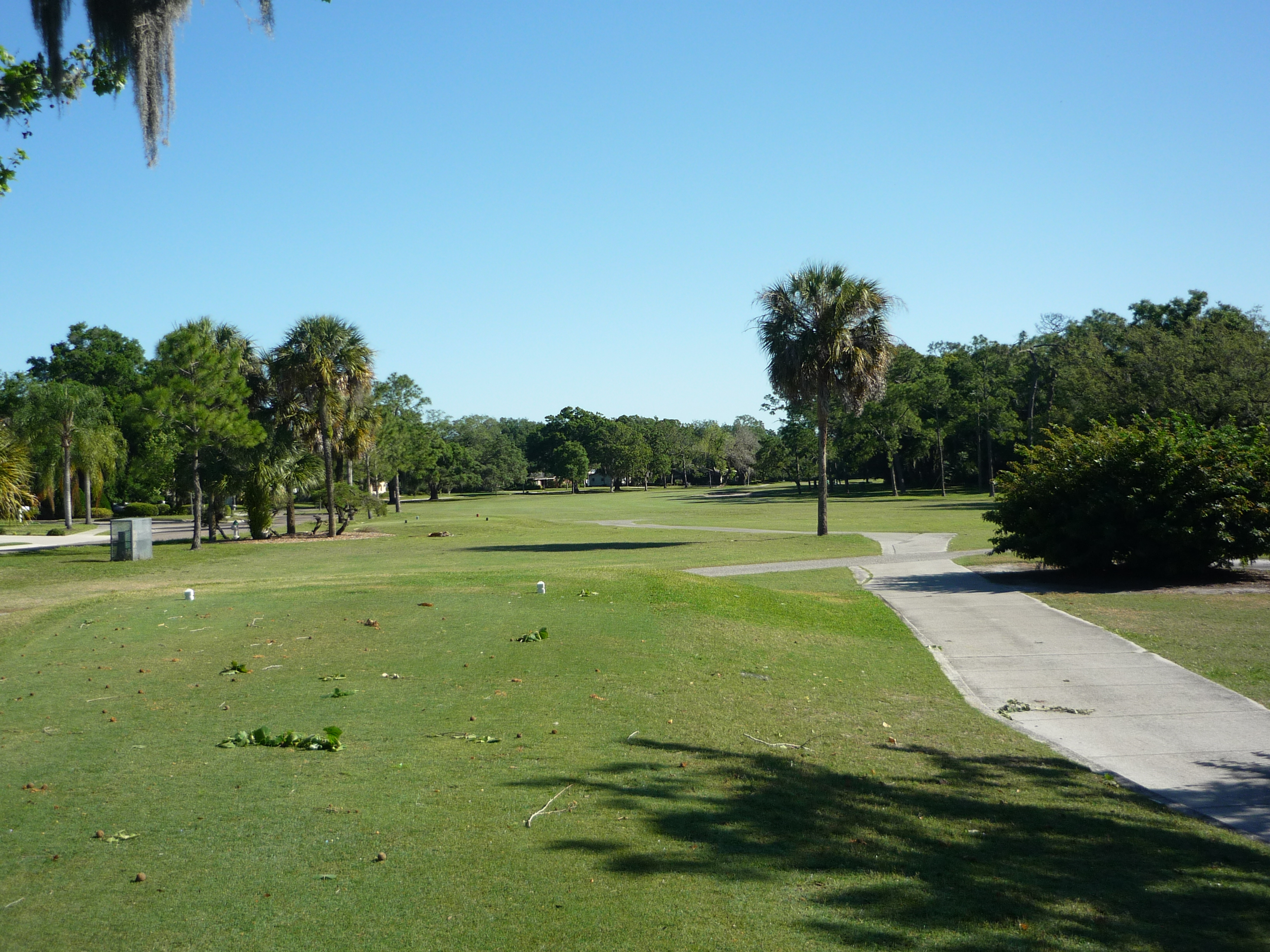
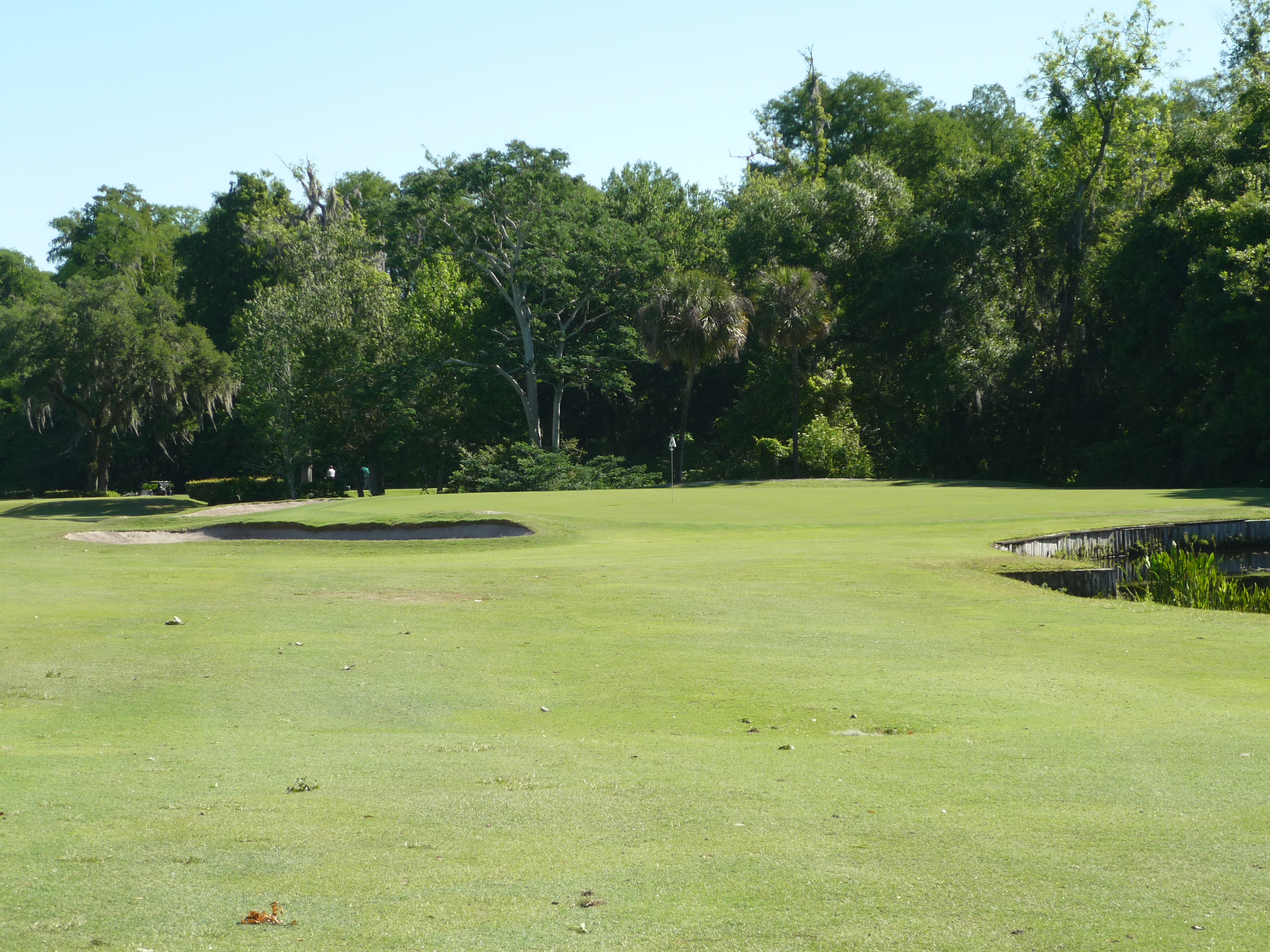
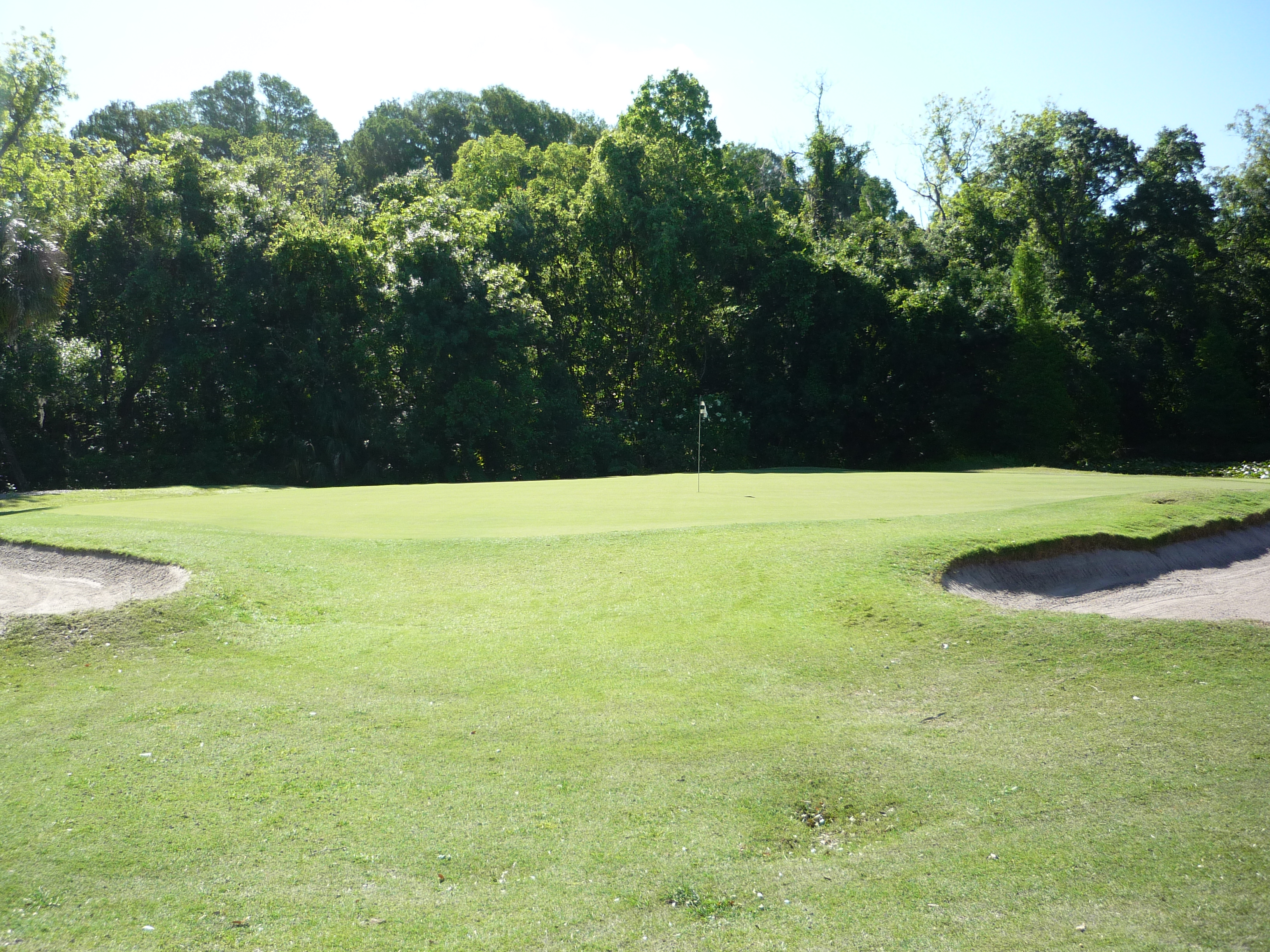
Hole 8 – 169 yards – Par 3
This hole is clearly uphill and it plays that way. The row of trees behind the green blocks a road so missing your tee shot in front of the green isn’t the worst.
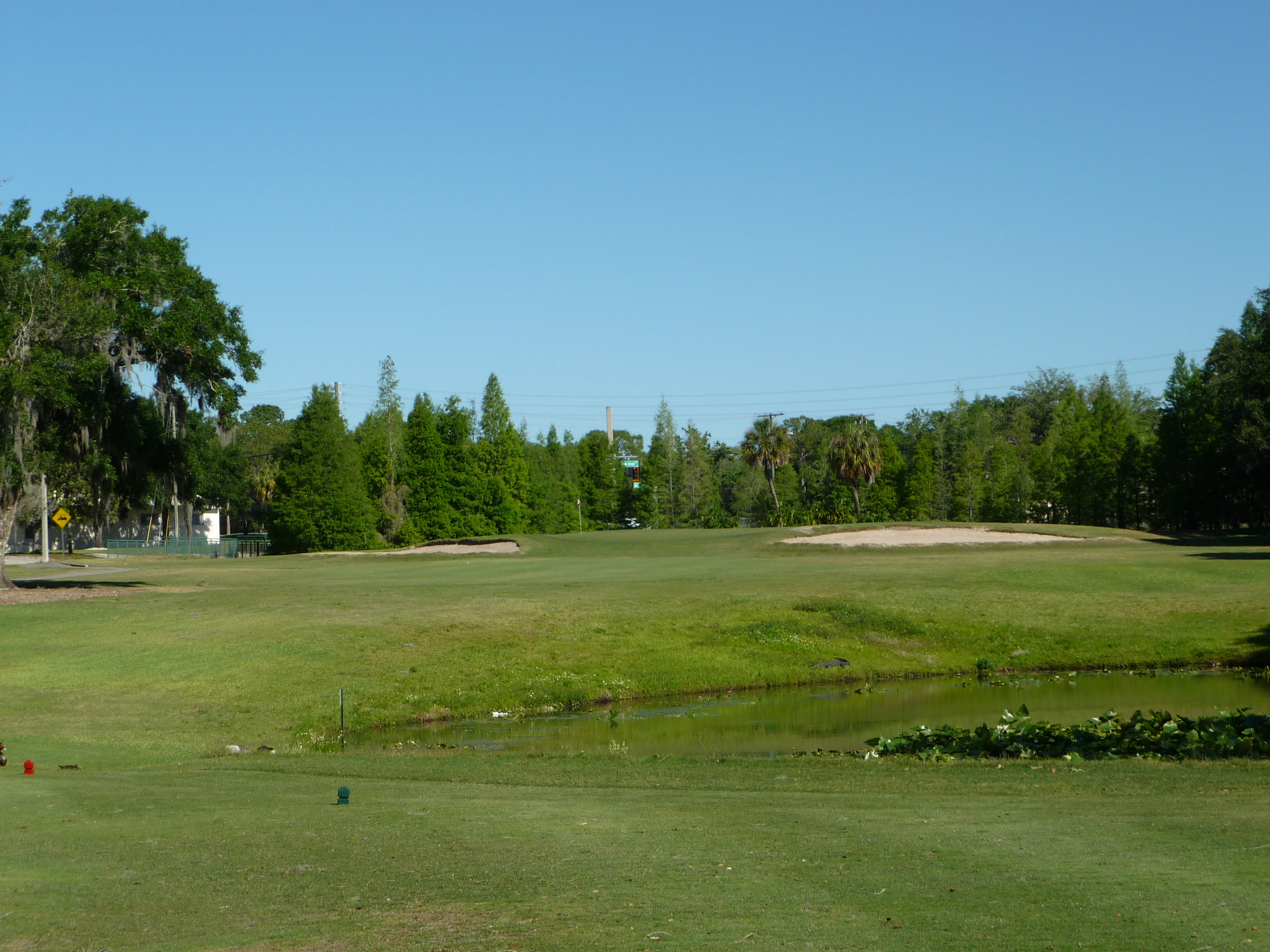
Hole 9 – 351 yards – Par 4
As you finish the front side the course gets back to its setting among the surrounding neighborhood. Don’t miss too far right of the green or you’ll be in a building.
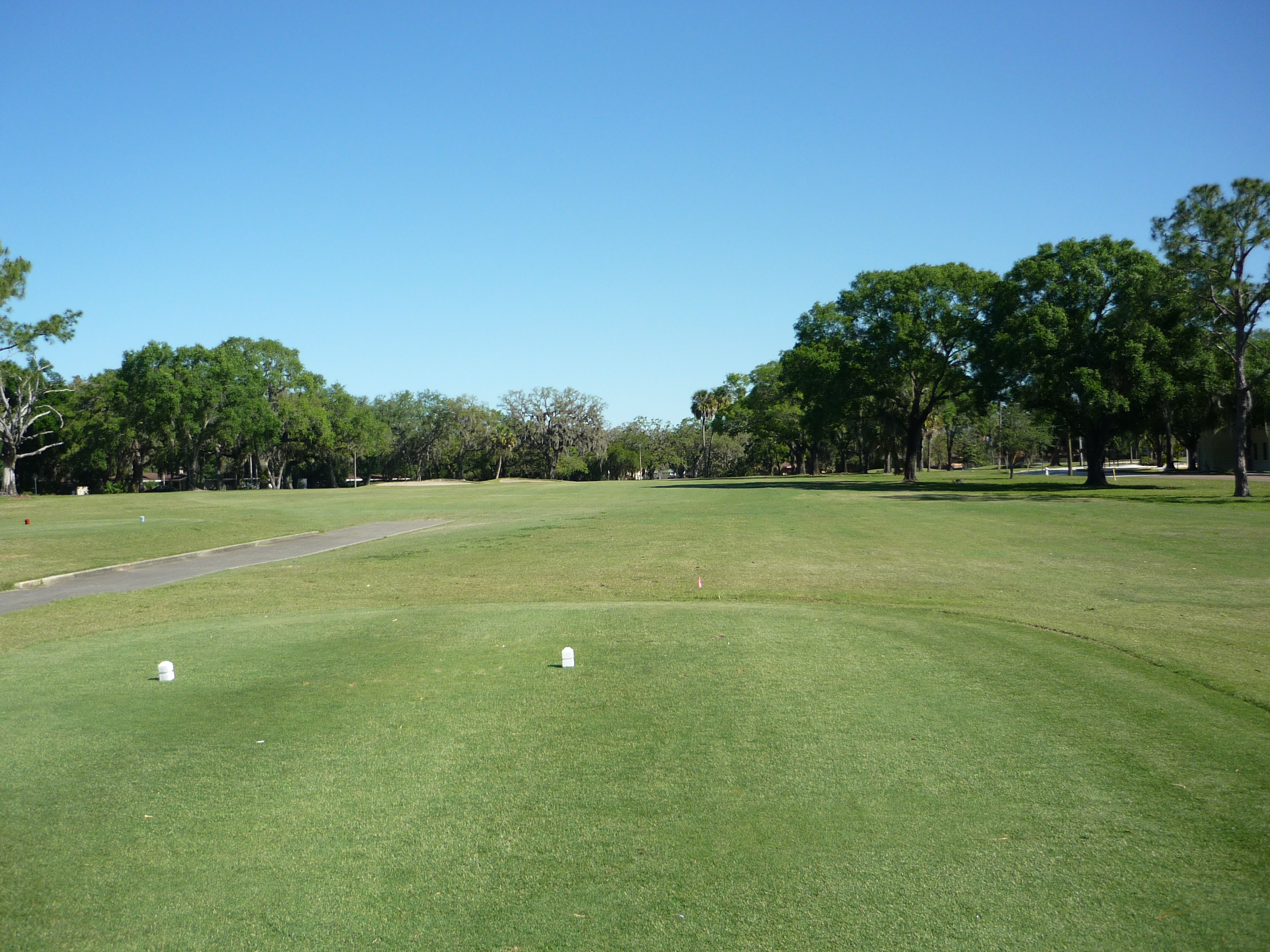
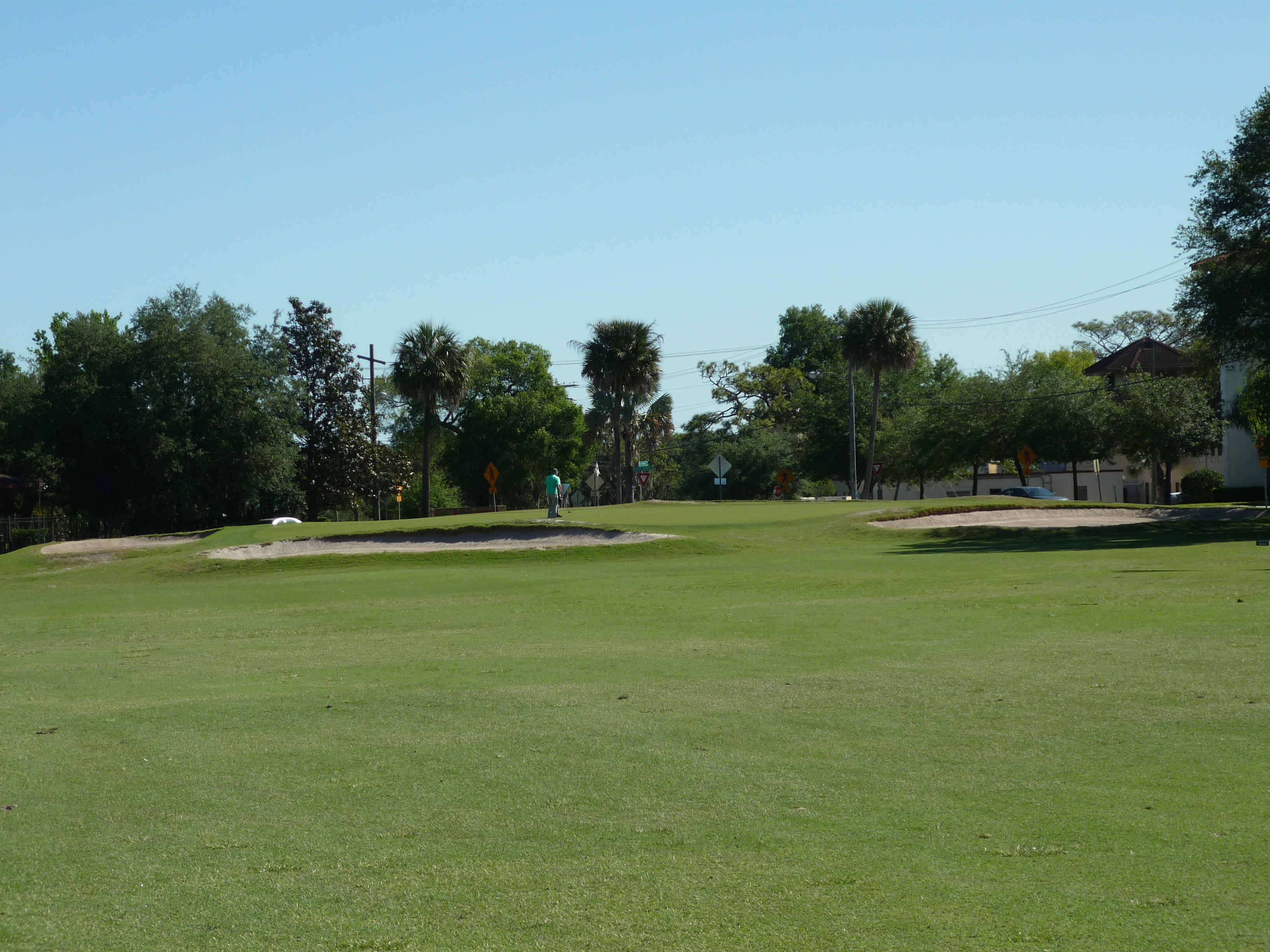
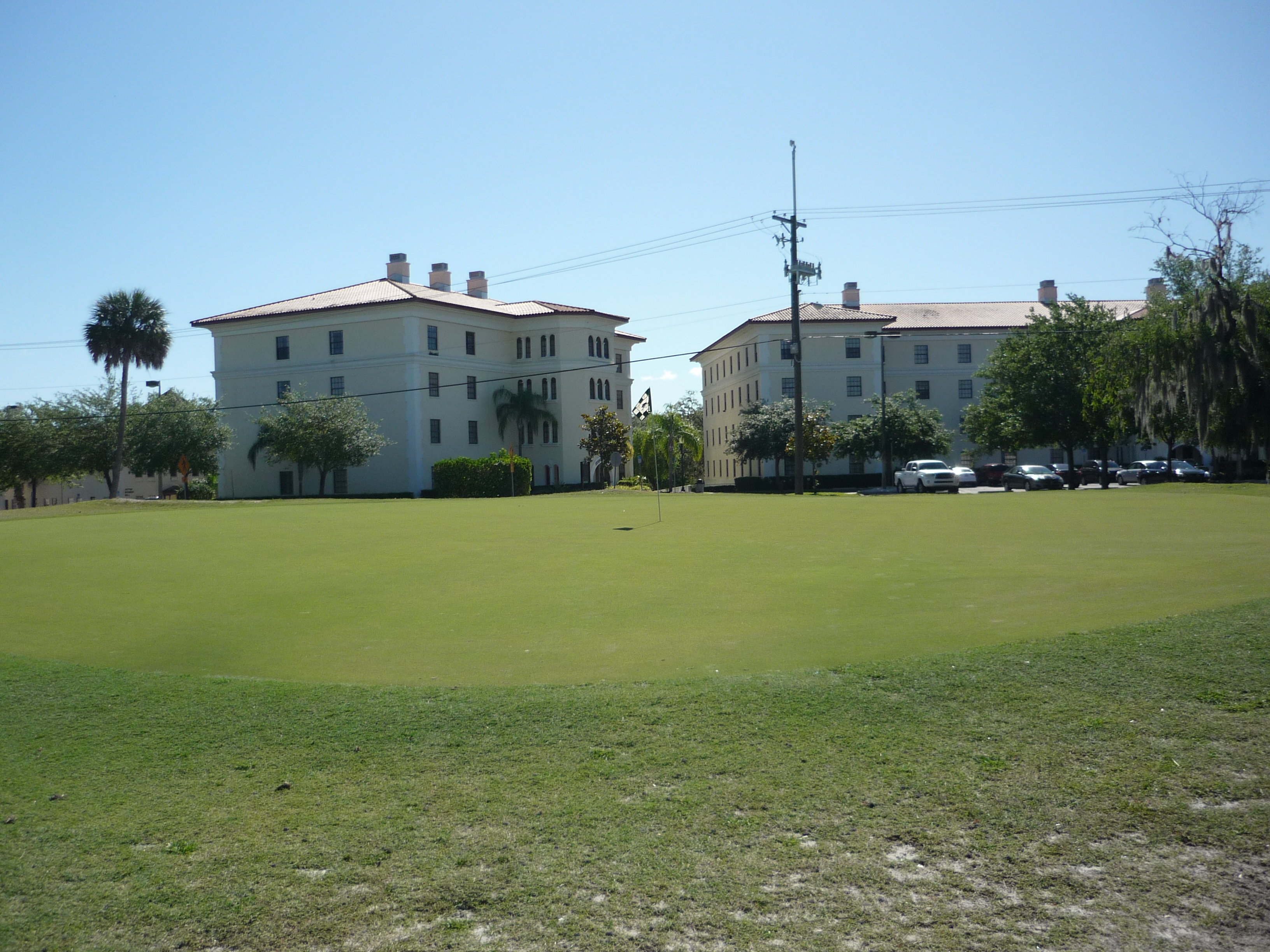
Hole 10 – 491 yards – Par 5
While it’s uphill off the tee, once you crest the mound it is downhill all the way to the green. Two well struck shots should leave a good chance to make birdie or better.
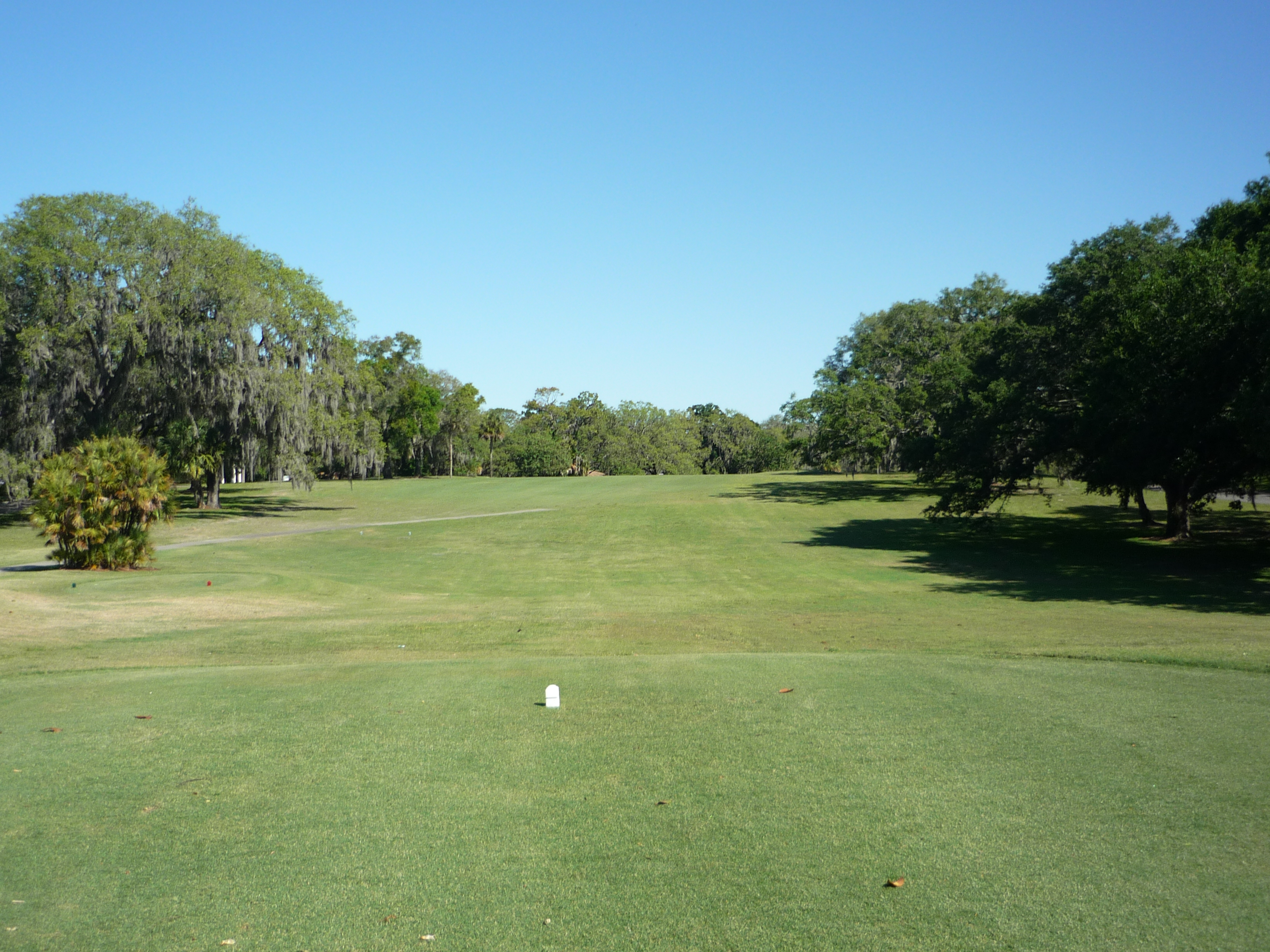
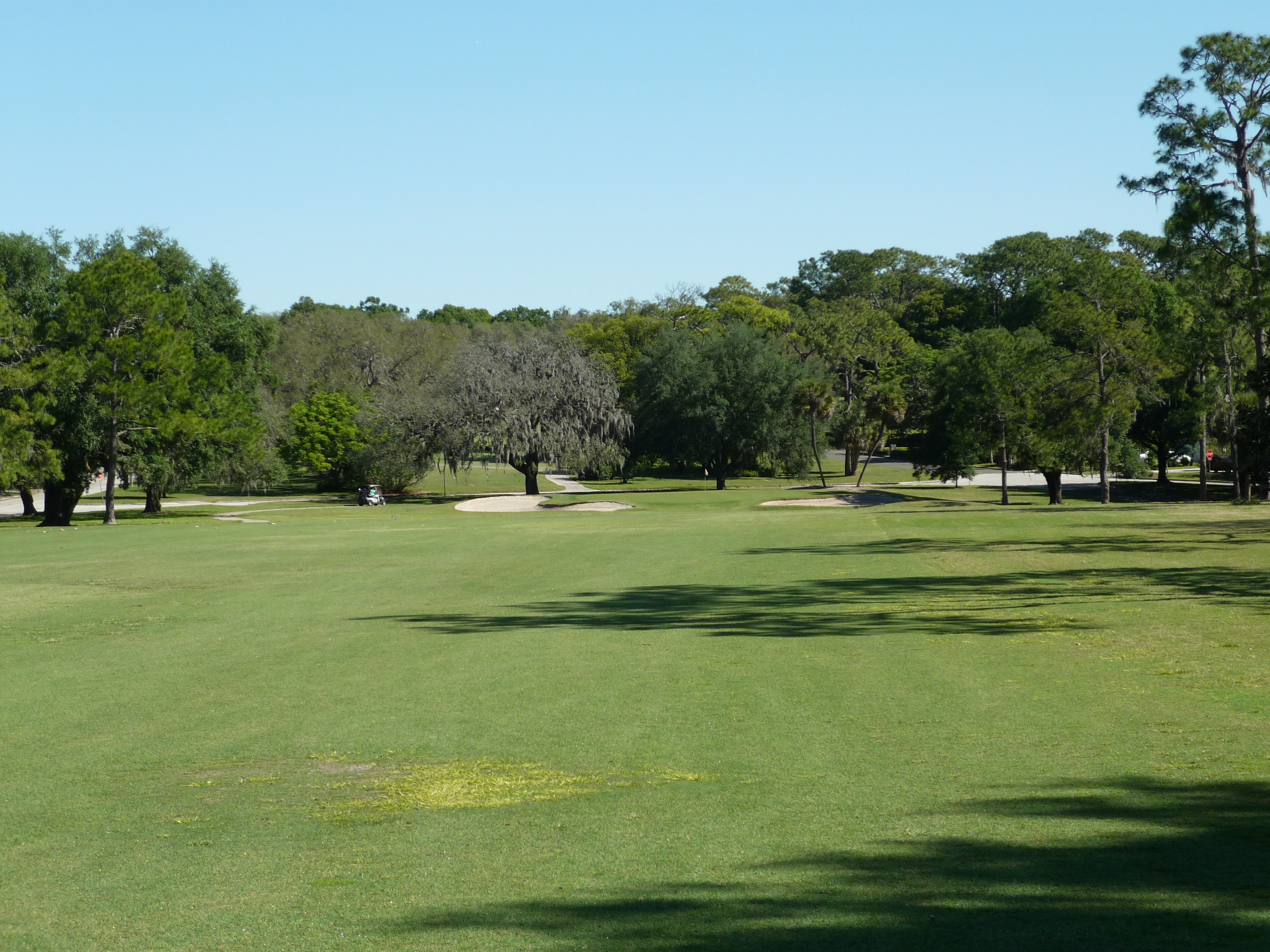
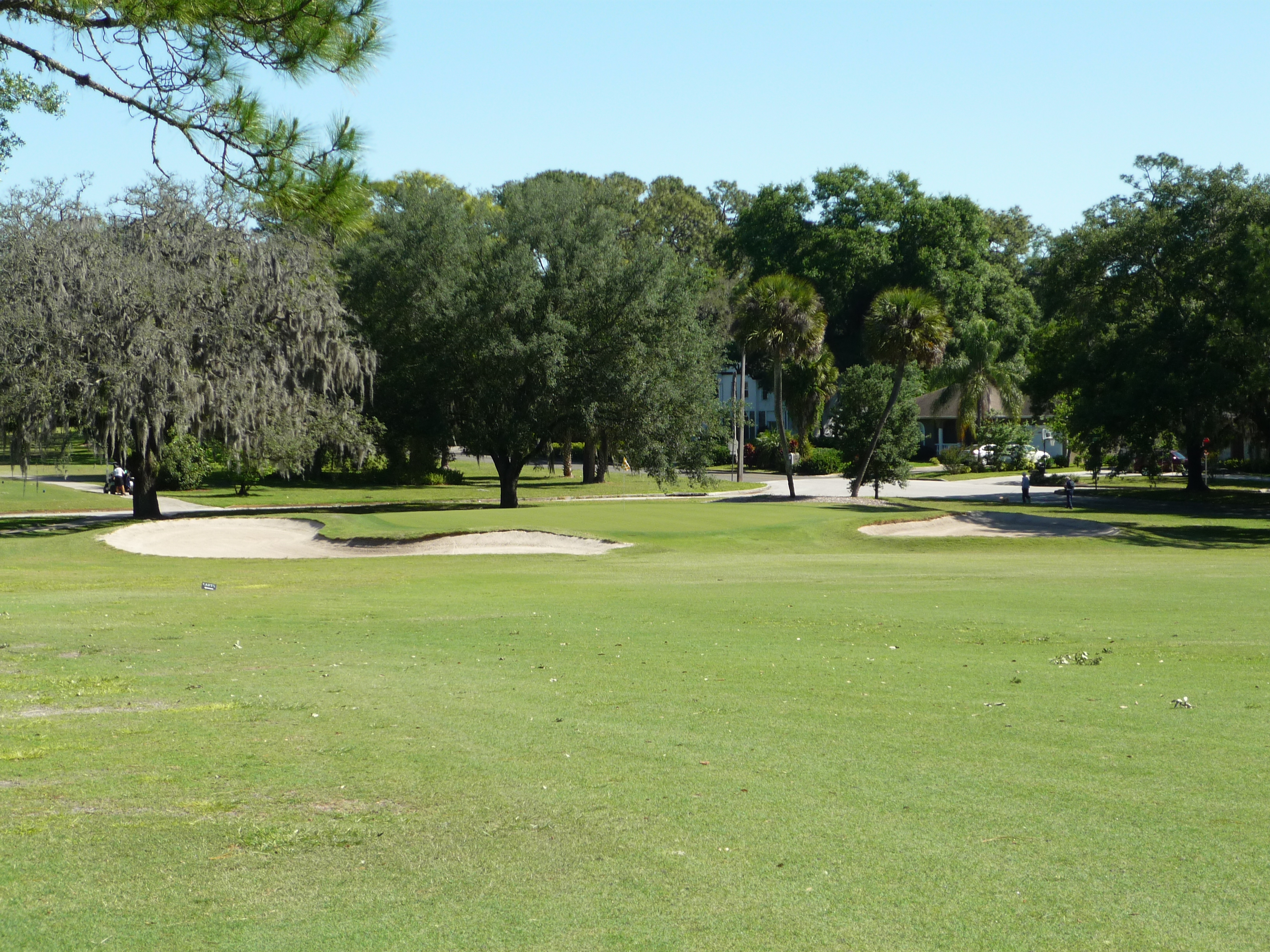
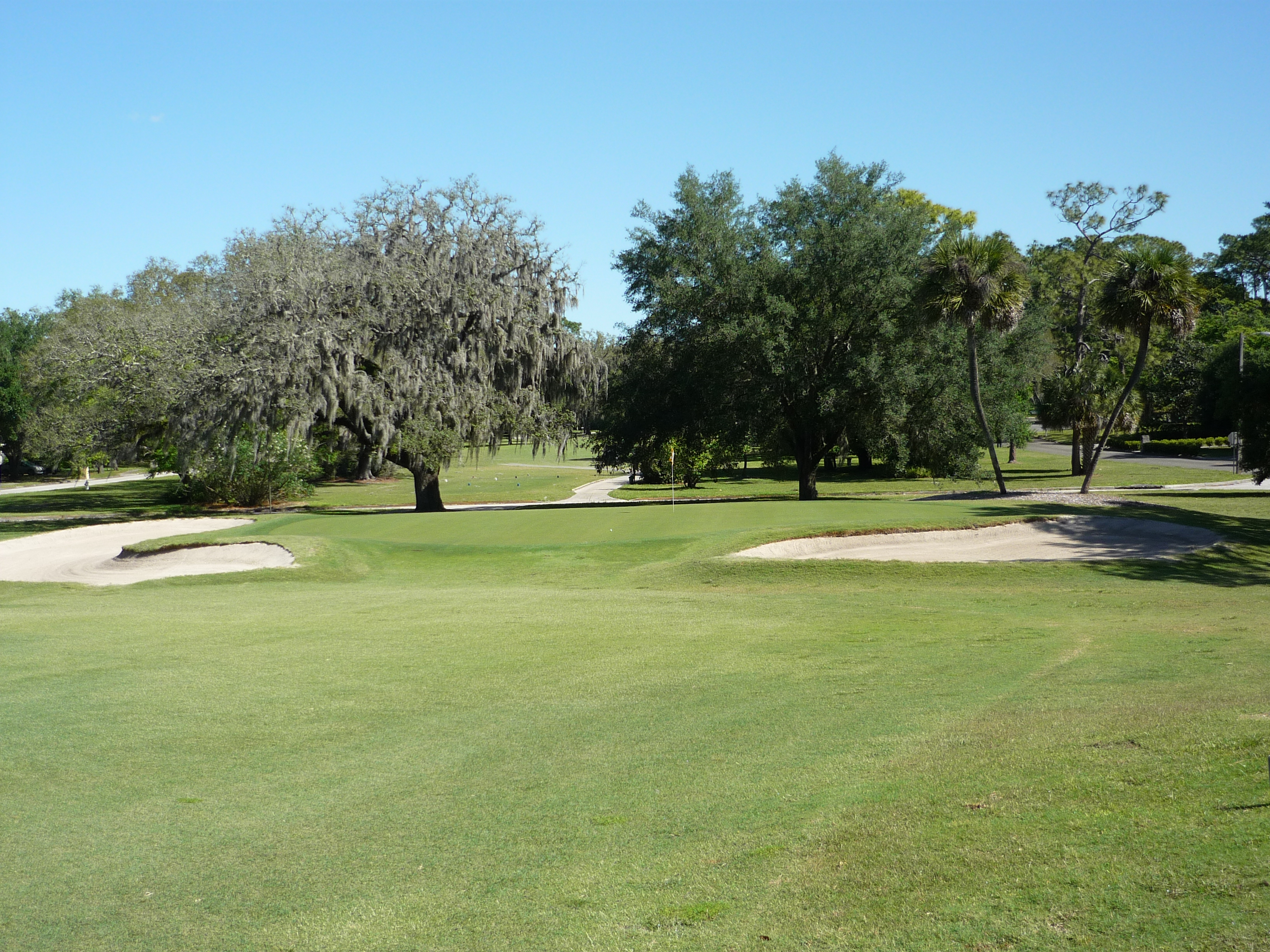
I enjoyed this view from the trees behind the green.

Hole 11 – 306 yards – Par 4
Some overgrown trees affect the tee shot here. A low fade fits best.
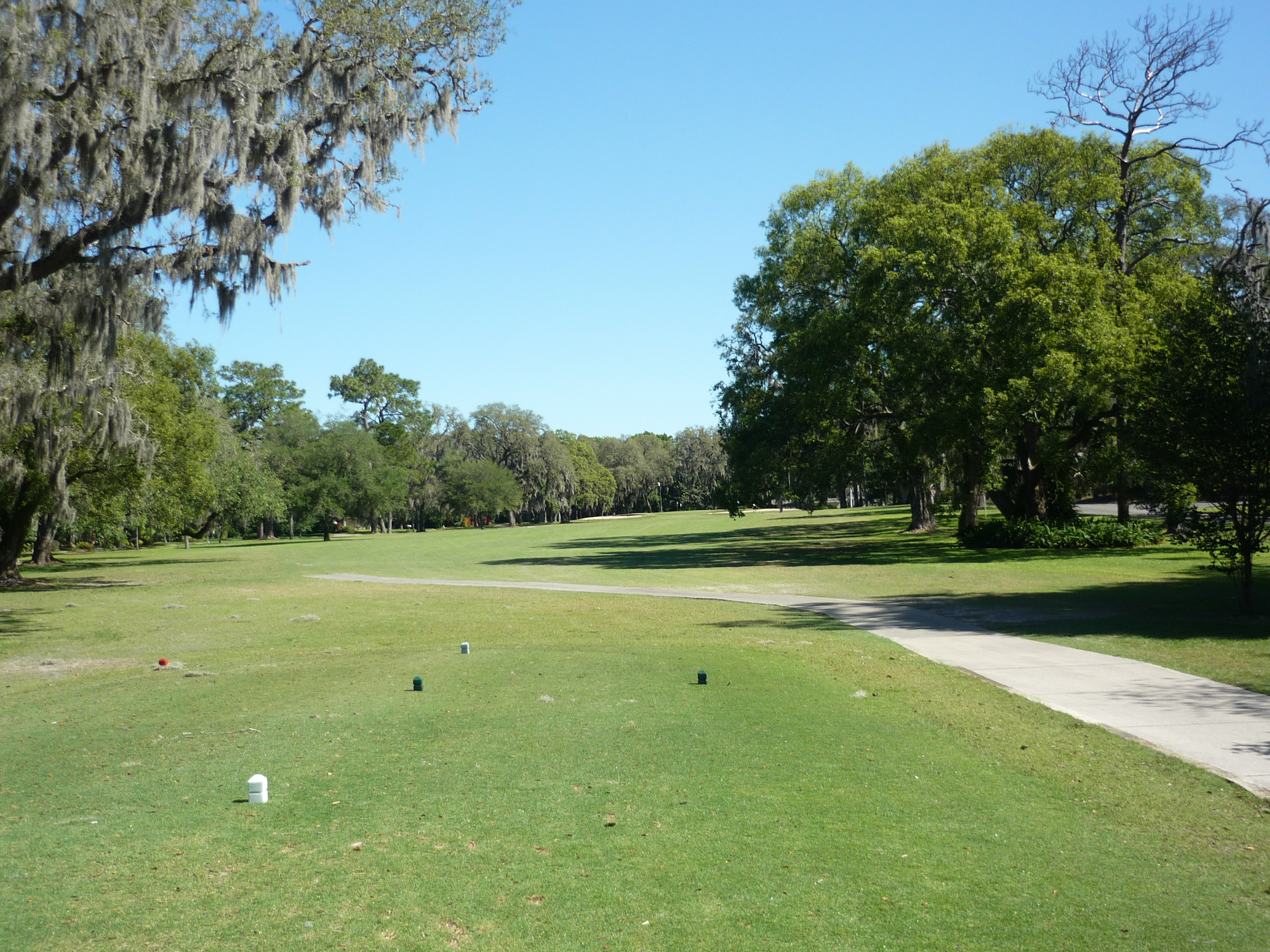
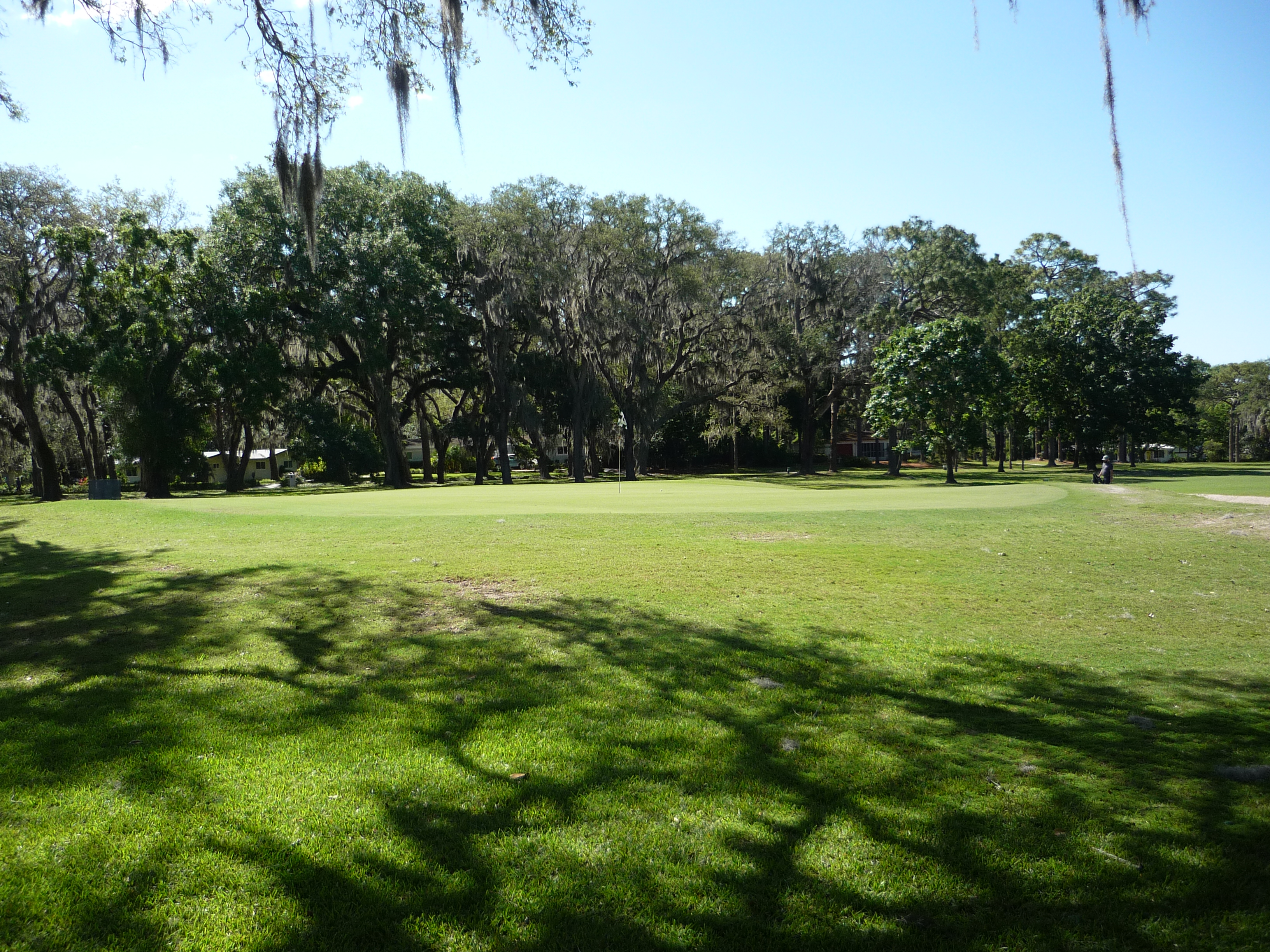
Hole 12 – 385 yards – Par 4
The trees started to become a bit claustrophobic on this tee shot. Otherwise it’s a straight hole with an ordinary green.
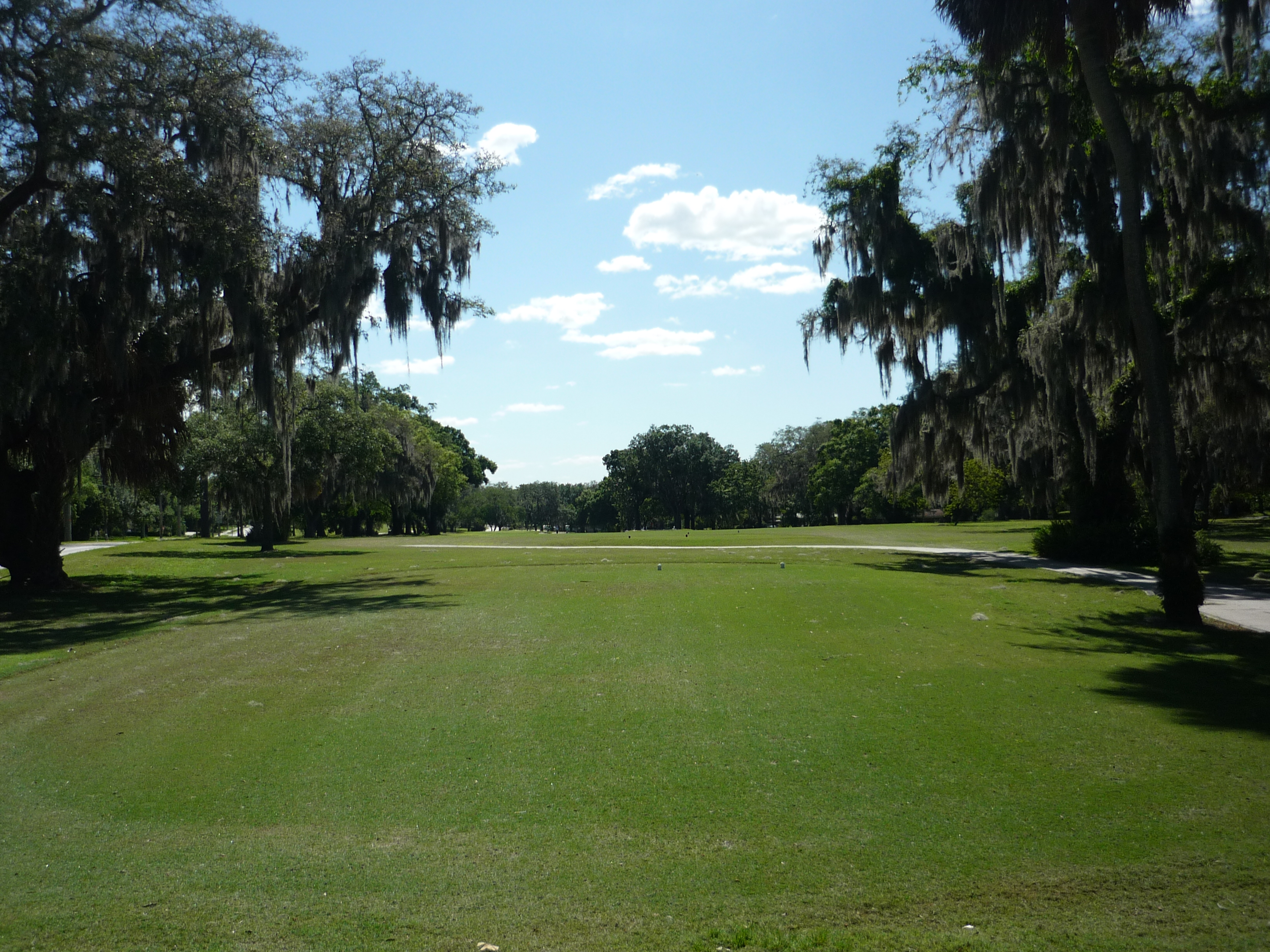
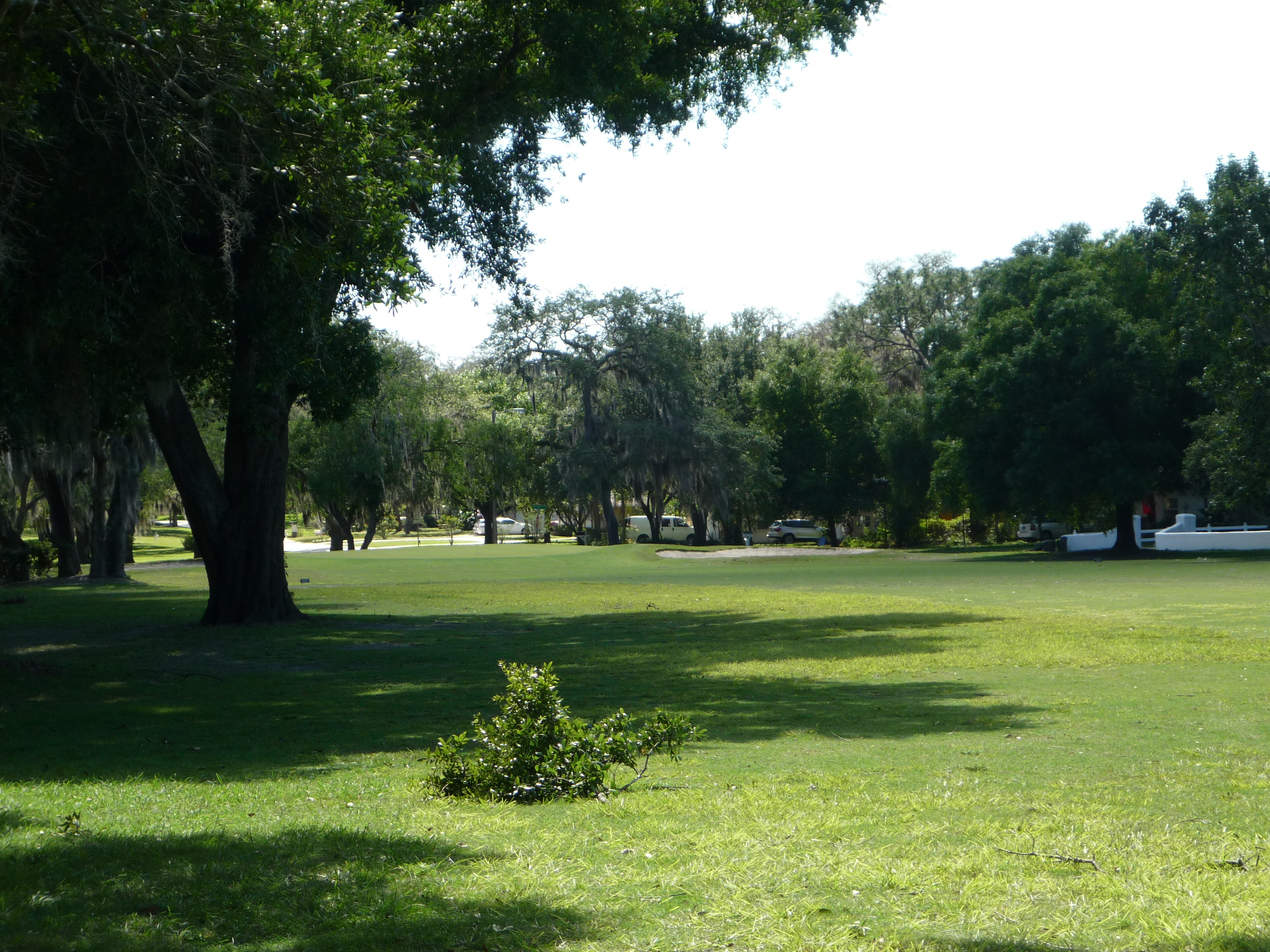
Hole 13 – 399 yards – Par 4
This fairway sits at a slight angle to the tee and favors a draw. The green has some slope off the sides unlike most of the others.
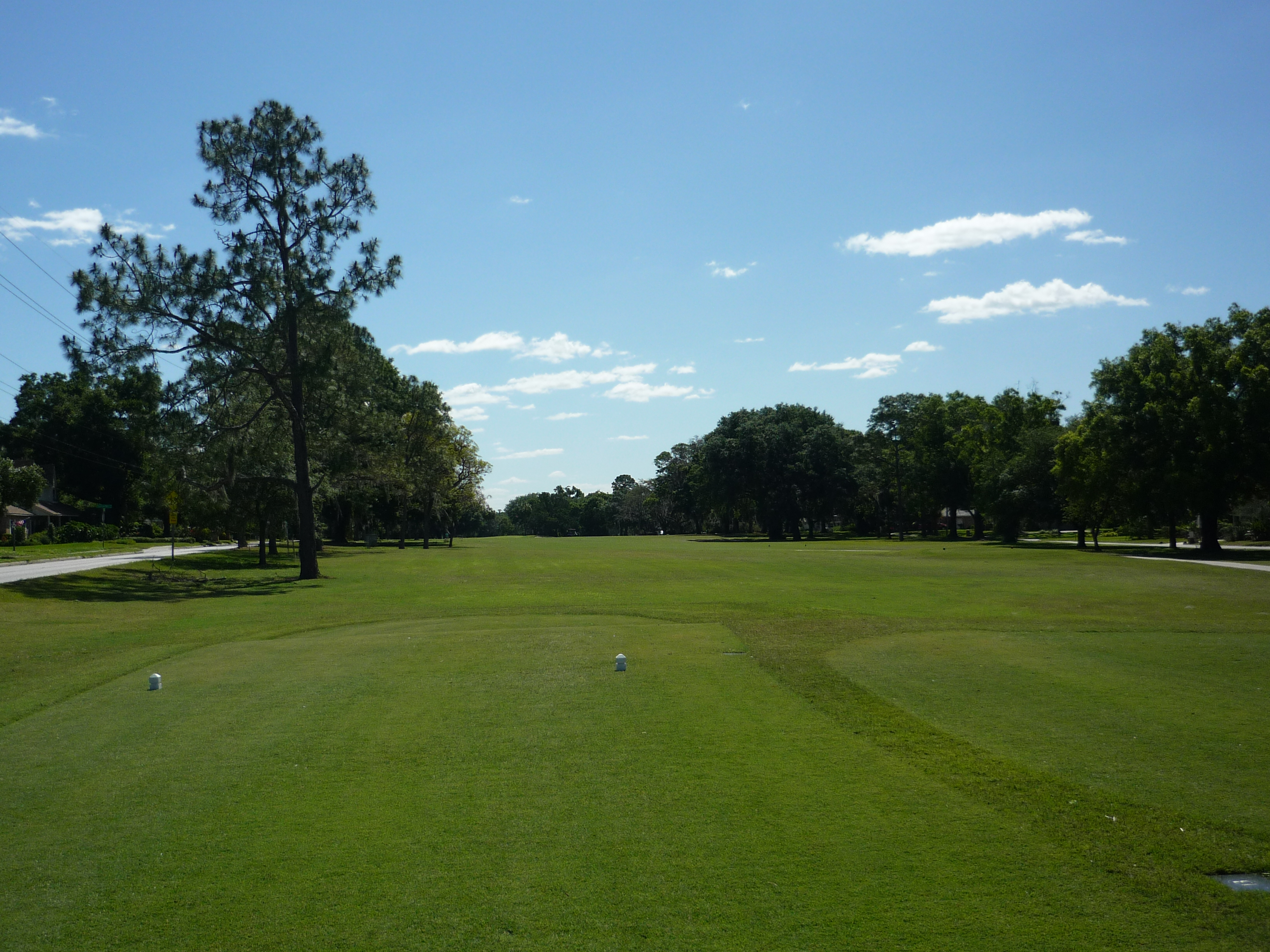
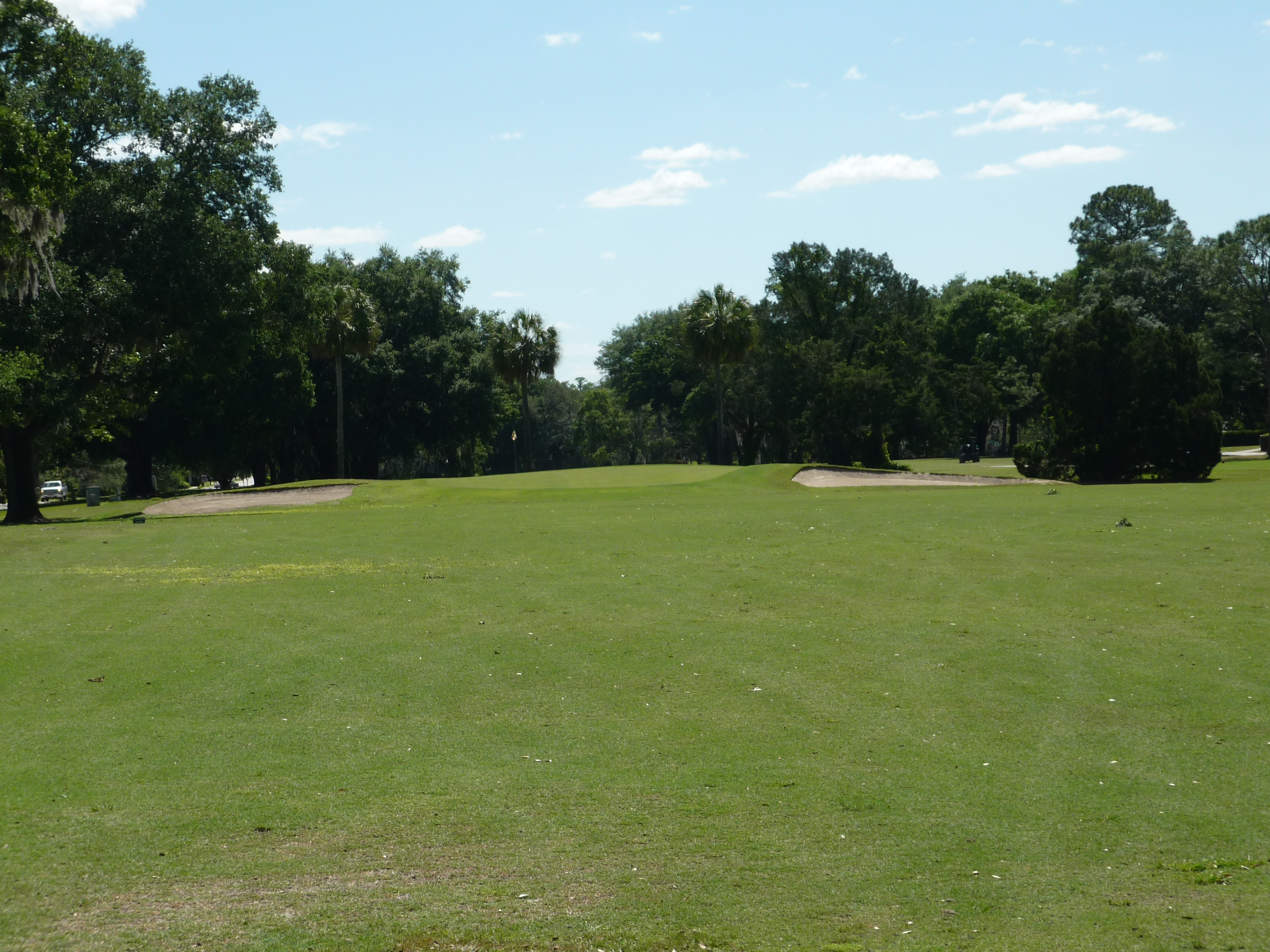
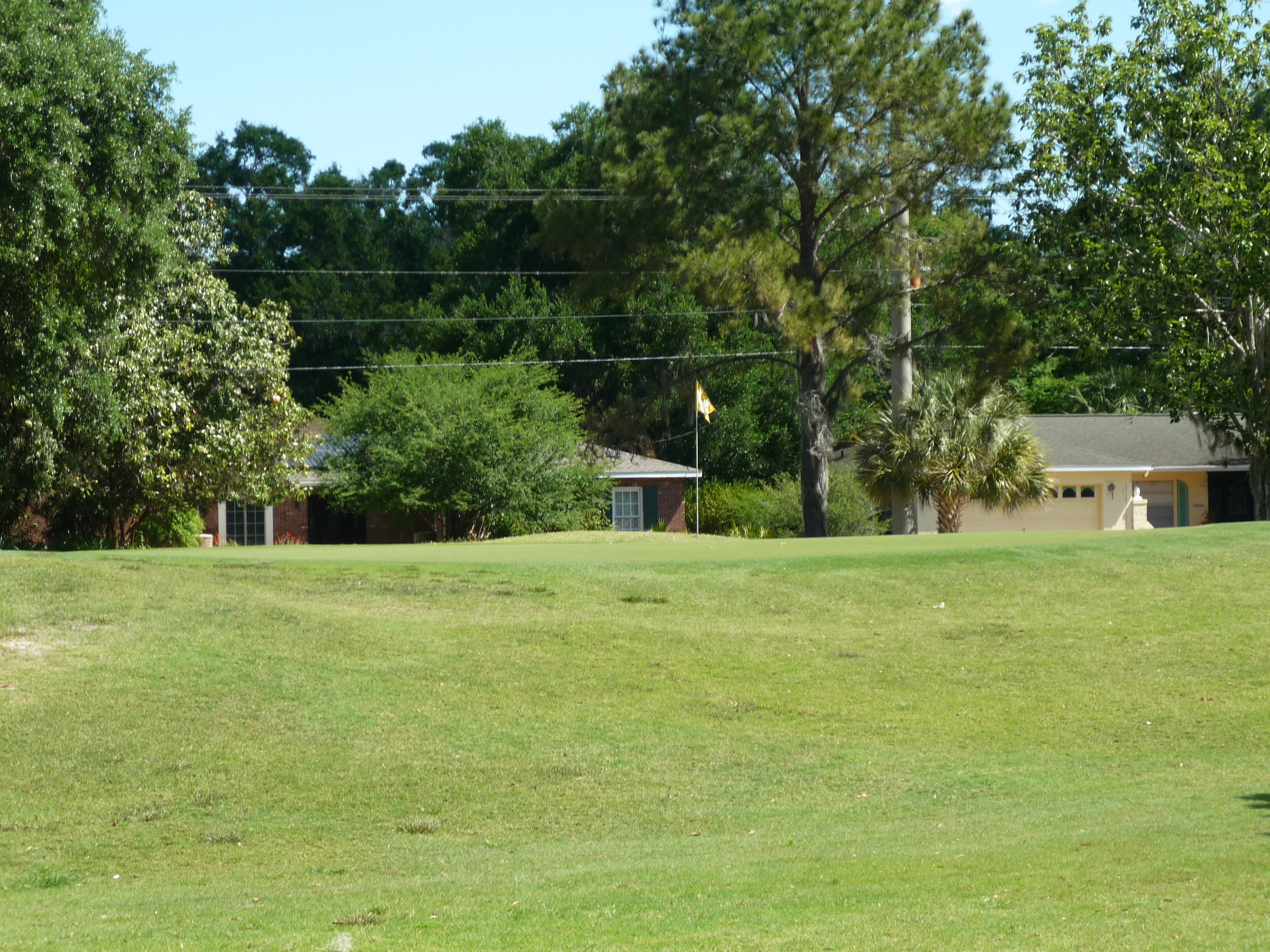
Hole 14 – 361 yards – Par 4
The hole moves downhill towards the green while offering bunkers on either side as protection.
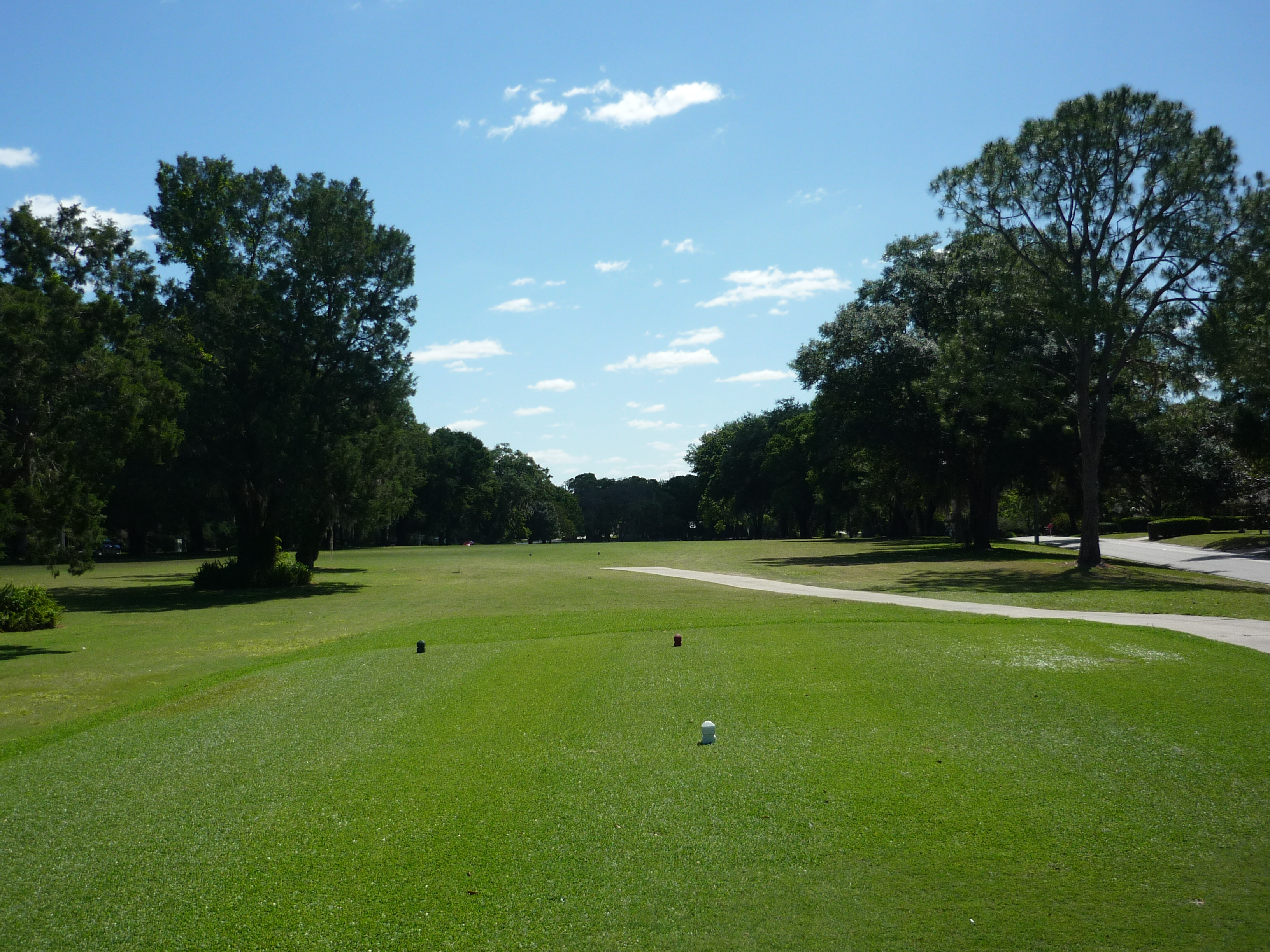
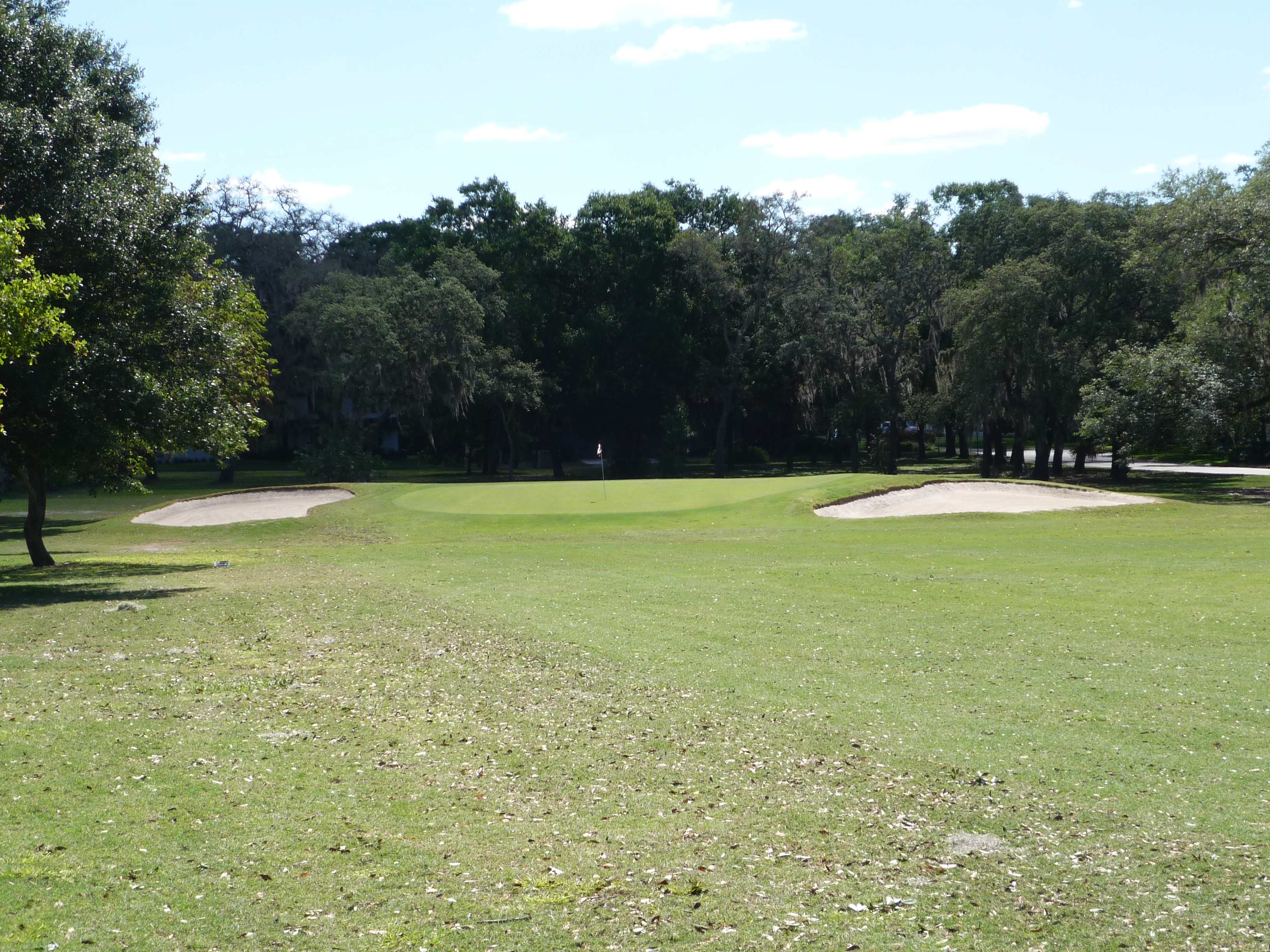
Hole 15 – 163 yards – Par 3
See green, hit green. There isn’t much to figure out on this hole.
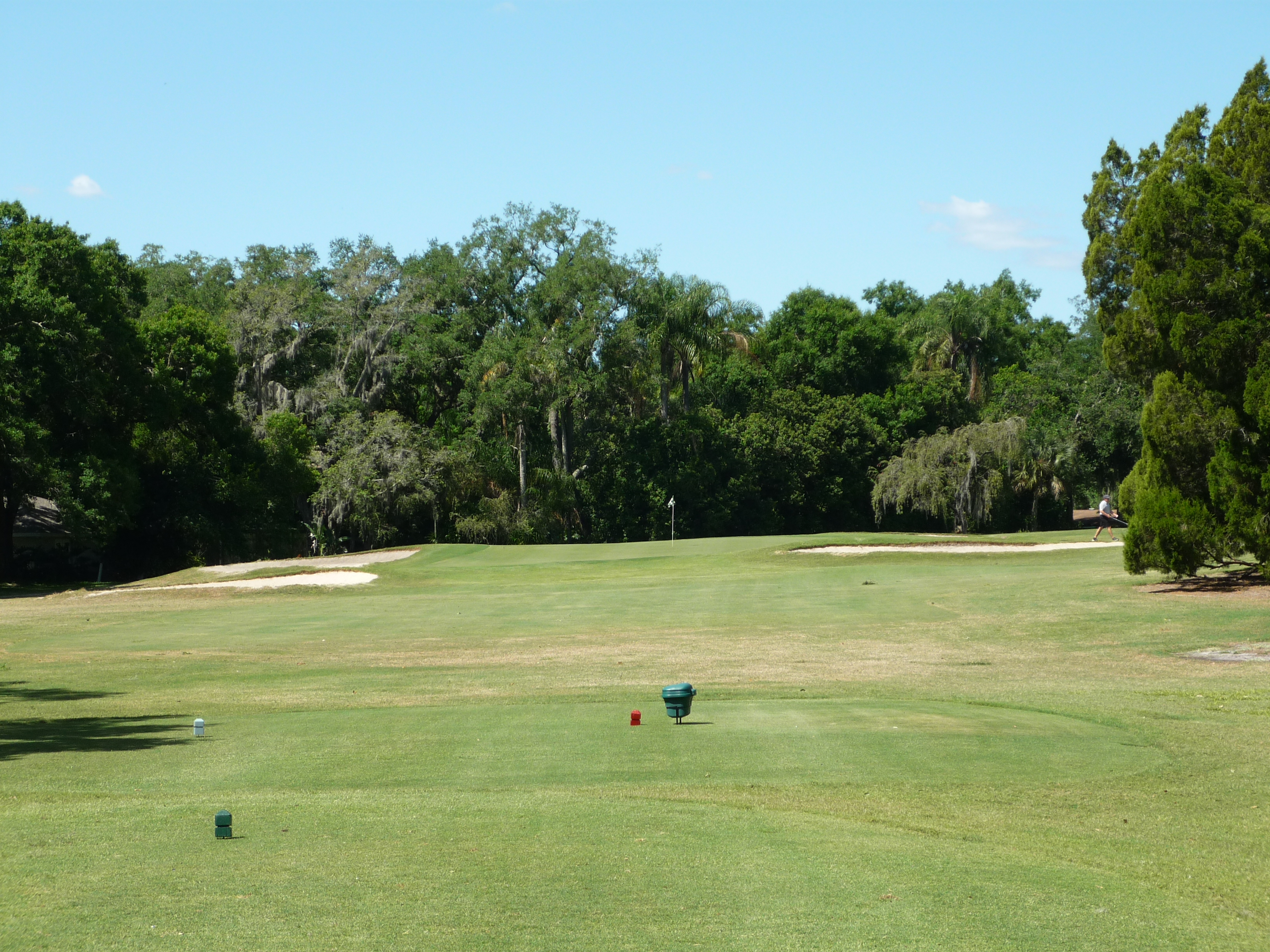
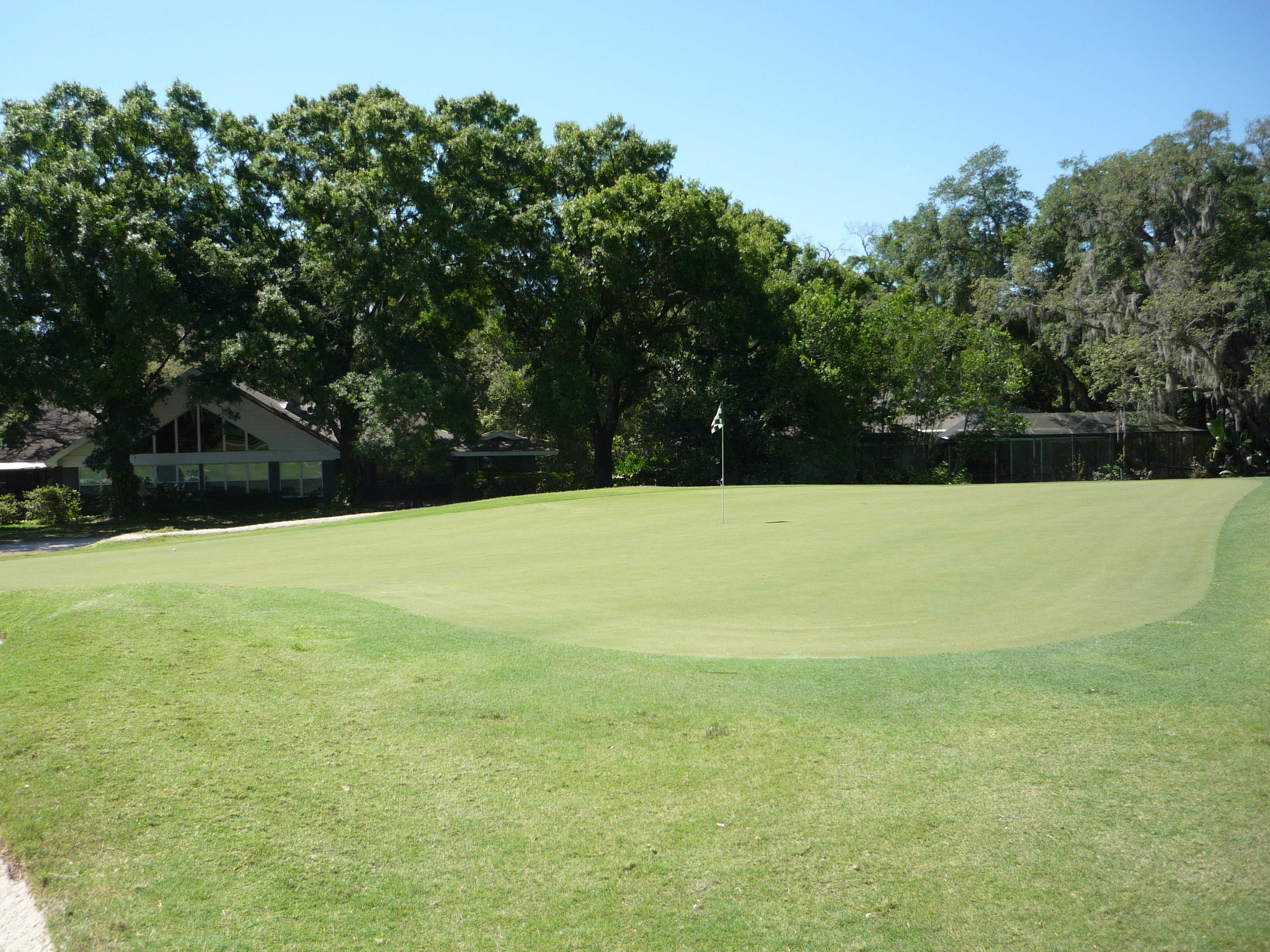
Hole 16 – 417 yards – Par 4
This dogleg left has one of the more demanding tee shots due to its length and curve. If you can execute a draw you will enjoy a green light approach.
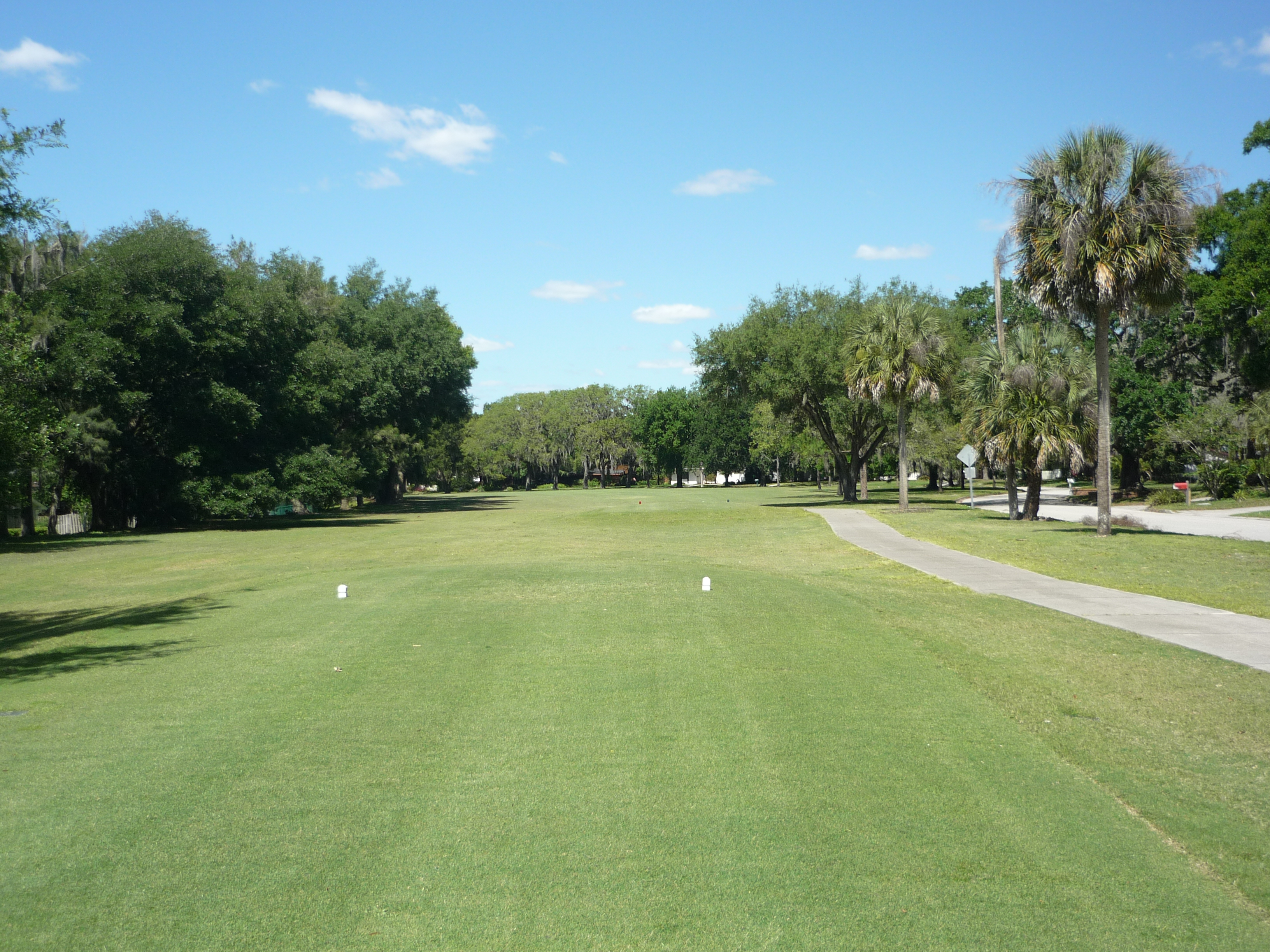
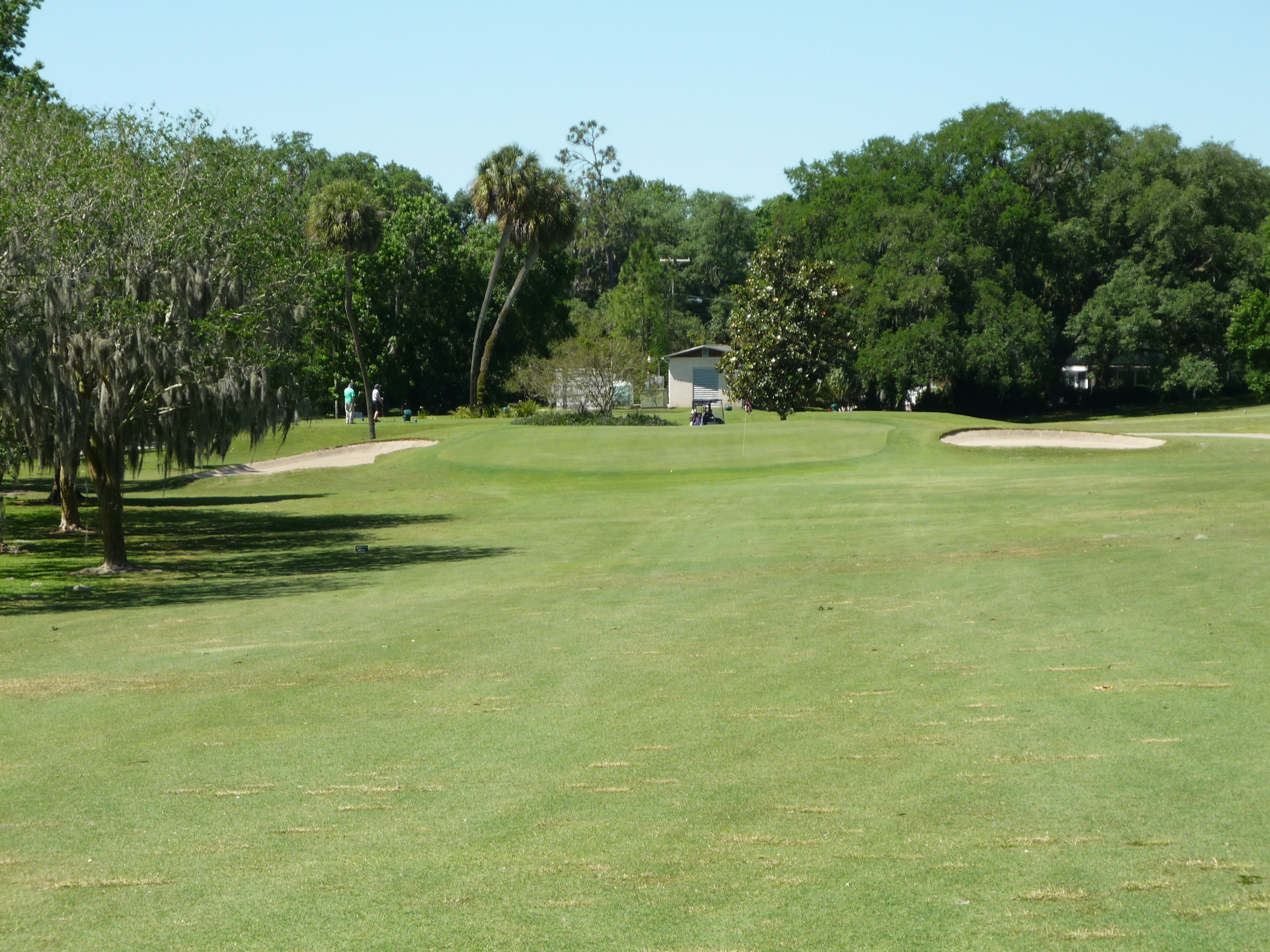
Hole 17 – 189 yards – Par 3
The penultimate hole concludes an underwhelming set of par threes.
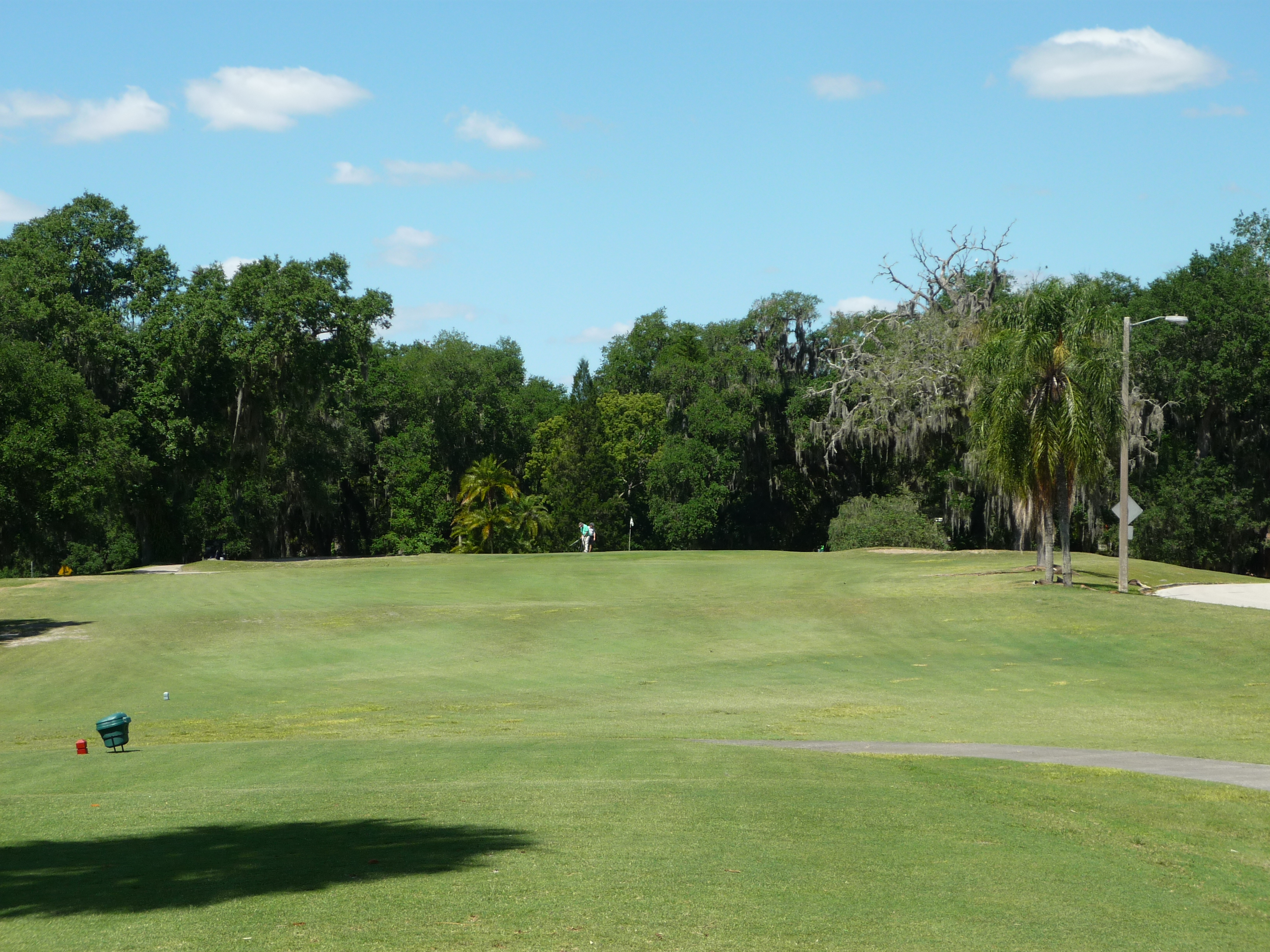
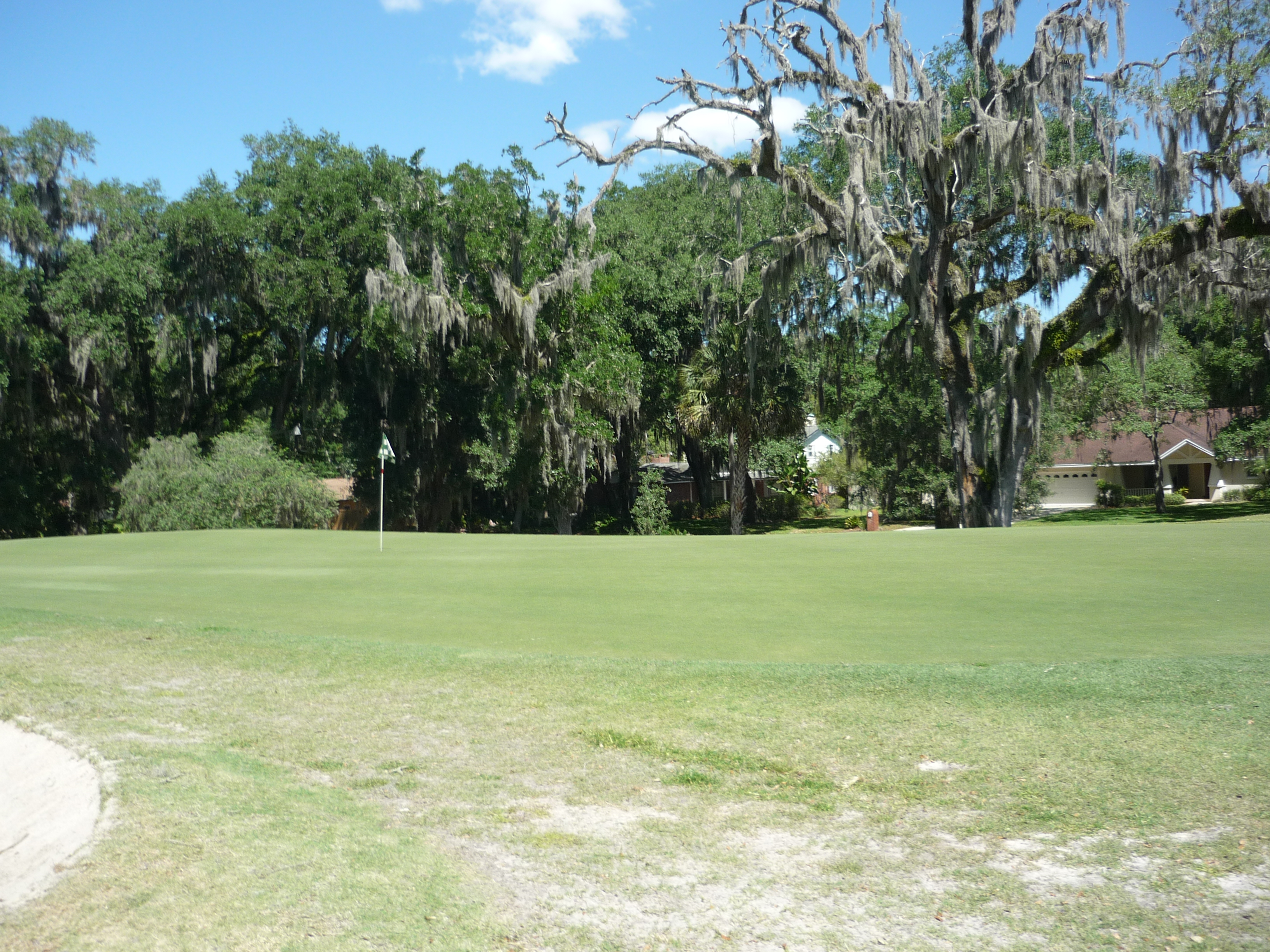
Hole 18 – 514 yards – Par 5
That tree is stupid, it needs to go. Other than that, I liked this dogleg left that plays uphill to a green sitting right next to the old college I mentioned earlier.
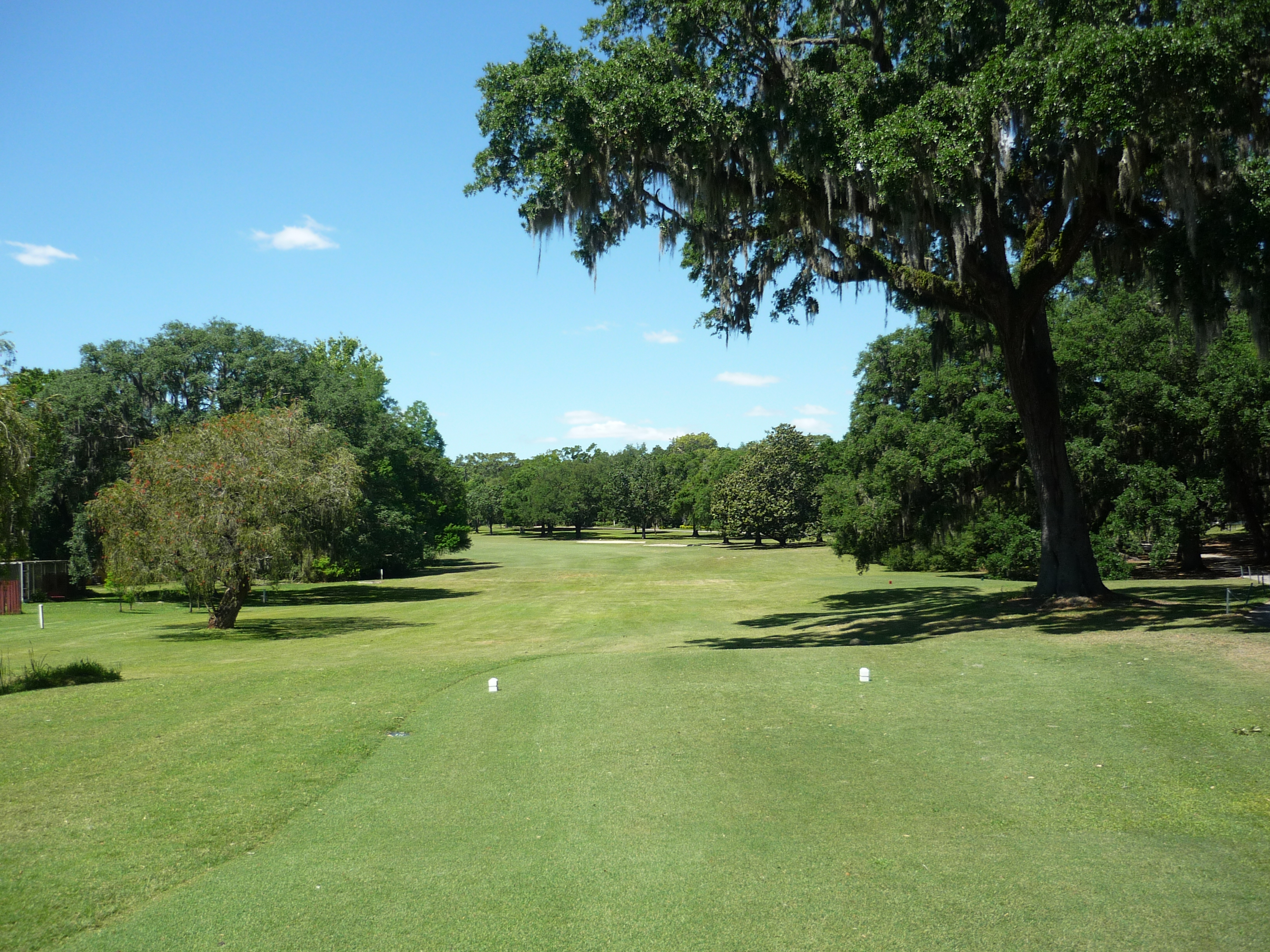
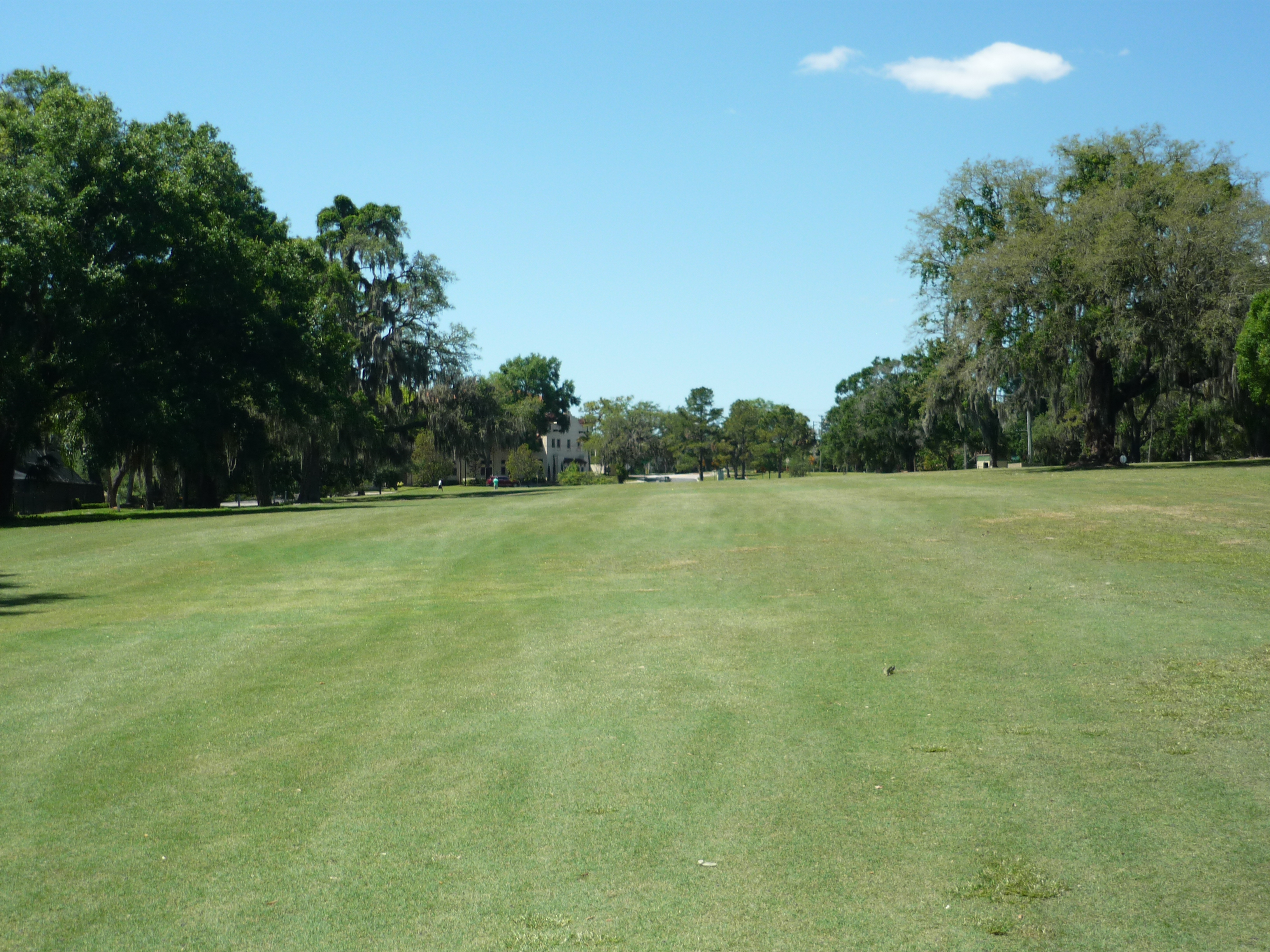
The building behind the green was supposedly the original clubhouse. It now belongs to Florida College and serves as a dormitory. There are historical plaques on the road that detail some of the history, which I recommend reading on your way back to the clubhouse.
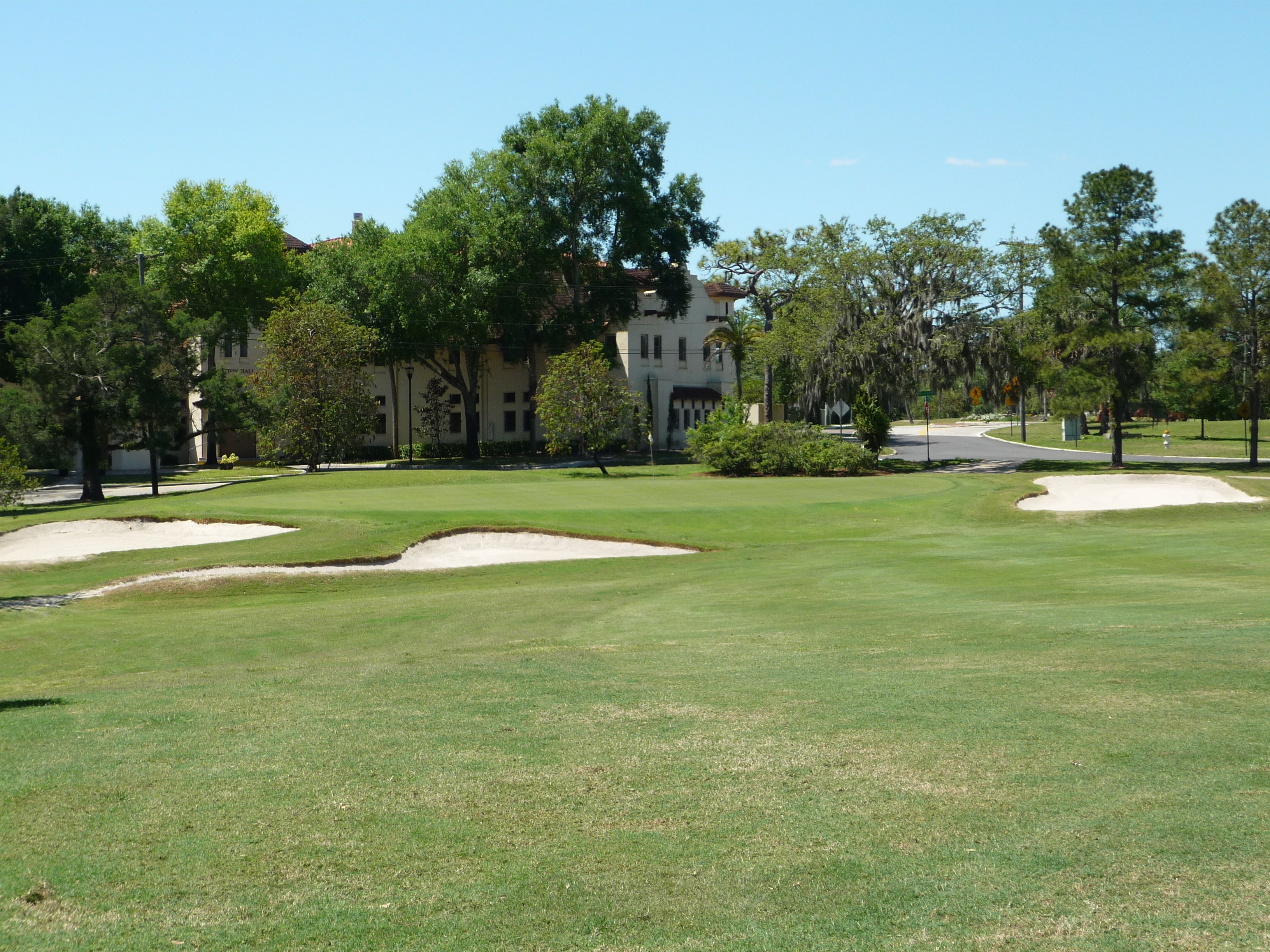
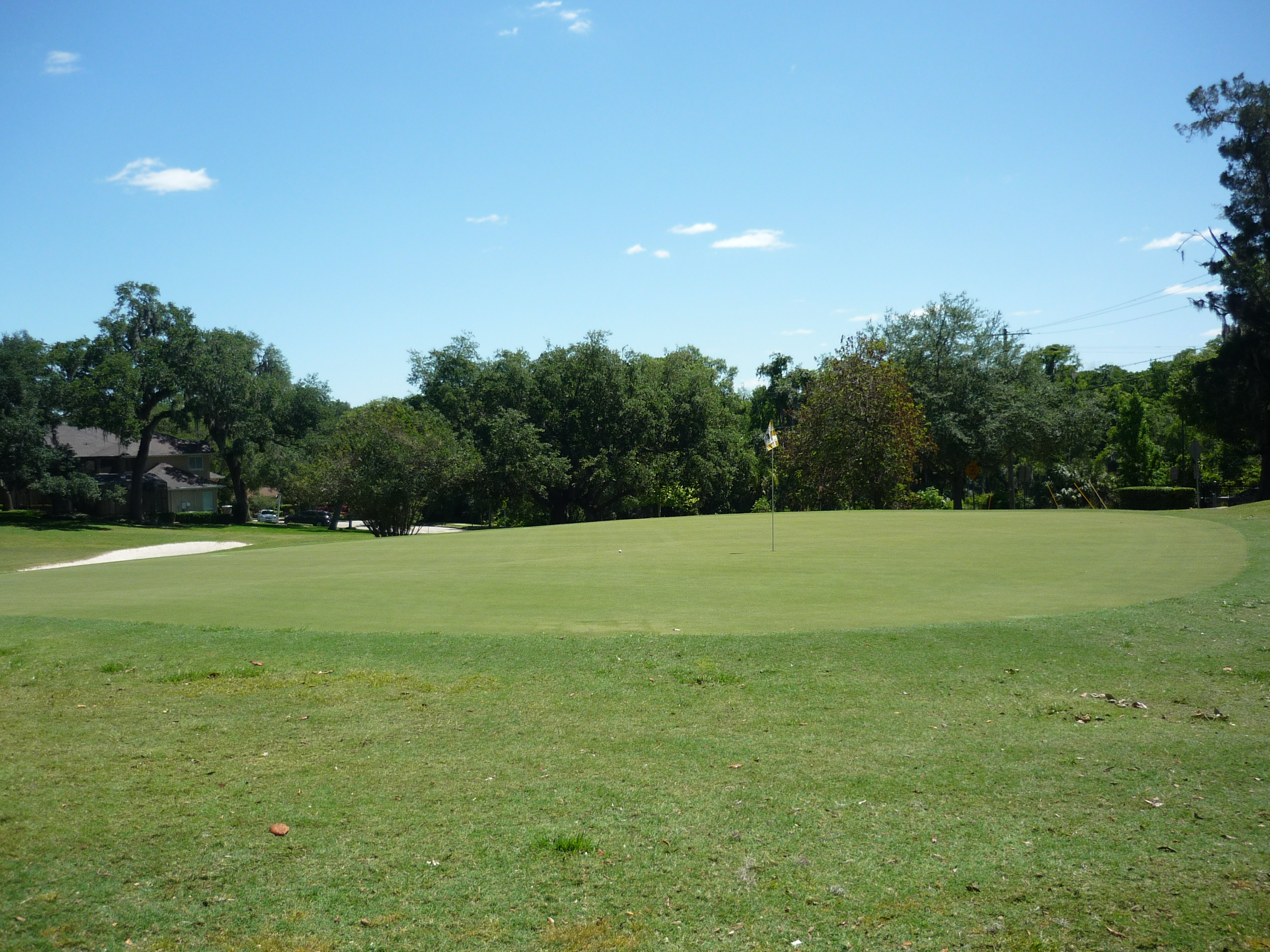
You may think I didn’t like Temple Terrace based on my review. That isn’t true exactly. Actually, the course didn’t wow me like some but I appreciated the simplicity of the routing and admire it for not trying to be something it’s not.
The course is old school and built for a time of shorter ball flights and wider misses. As such, accuracy is still important due to the tree growth which sometimes forces shorter clubs from the tee. In that respect, you can get a feel for what players of yesteryear experienced distance-wise.
The club is a great place to learn the game or visit with a beginner friend. Unlike most Florida courses it doesn’t beat you up with water hazards and forced carries. For that reason, I recommend anyone take at least one visit to see some old school charm in Florida.
